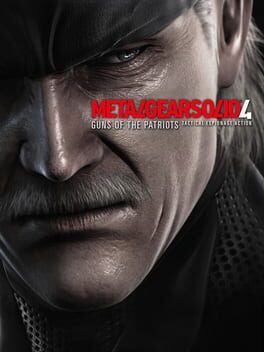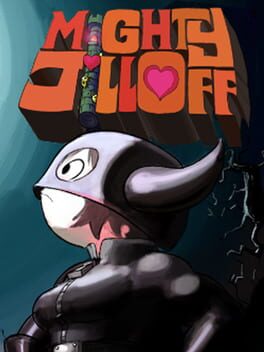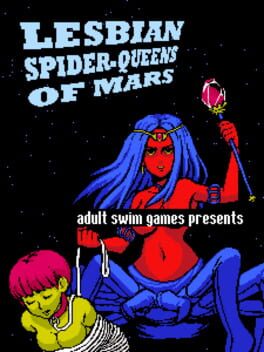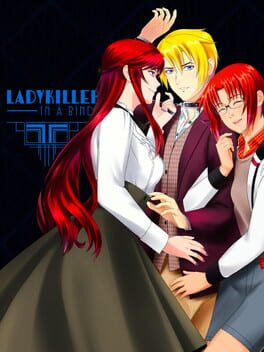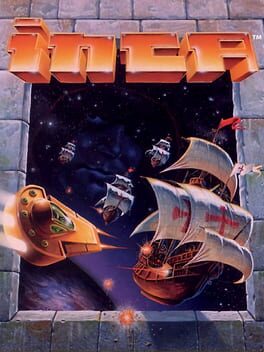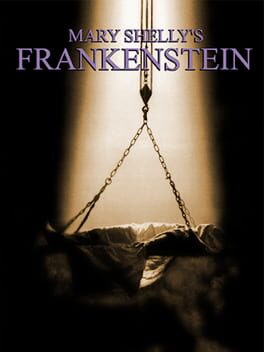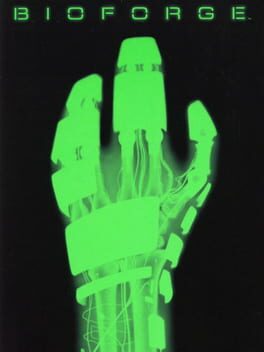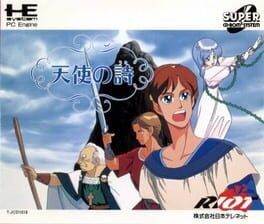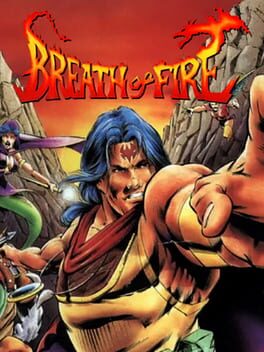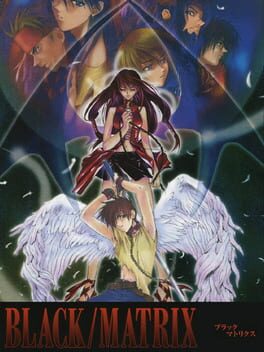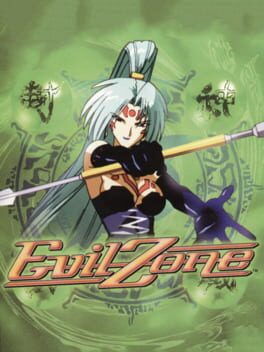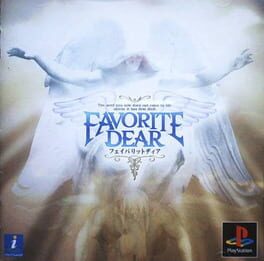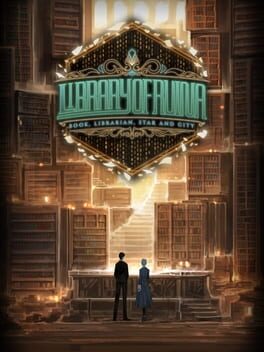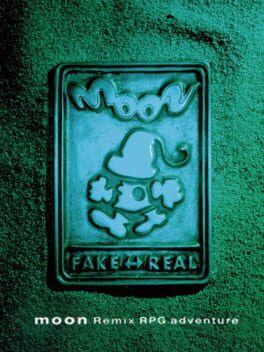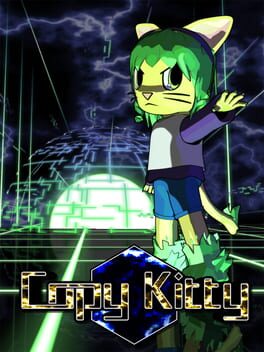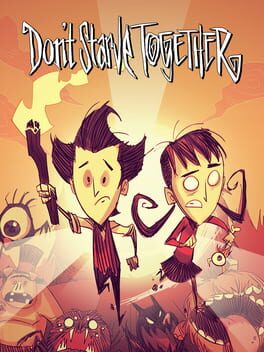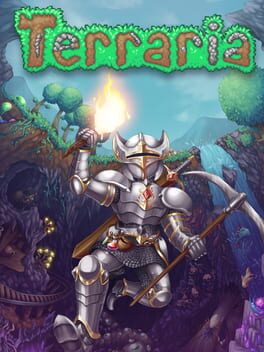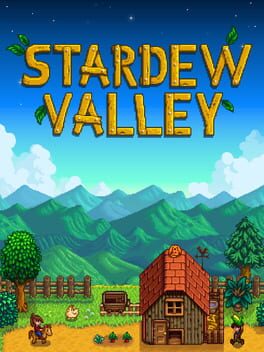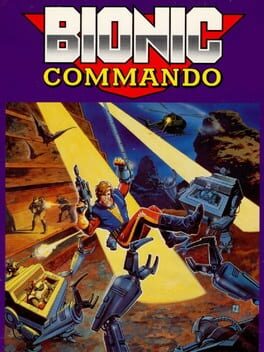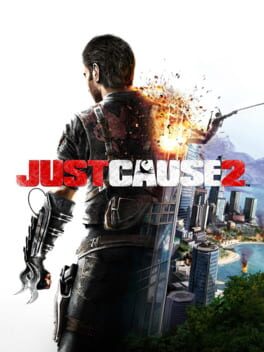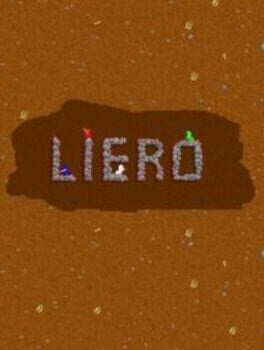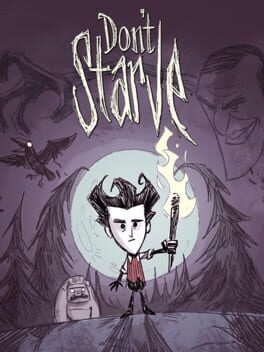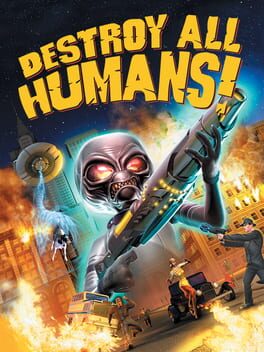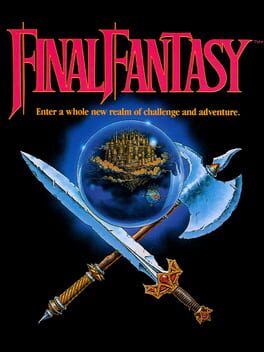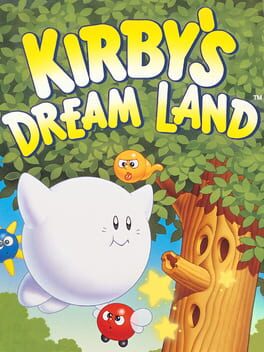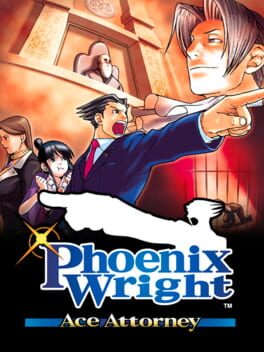Zefie
108 reviews liked by Zefie
The Beginner's Guide
2015
It’s incredible that the Yakuza Like A Dragon series exists in this form at all. It’s really easy to discuss these games as a simple comeback story where it was saved from (Western) obscurity by grassroots efforts rallying around 0, but the fact that this insane momentum was met by RGG Studio changing the protagonist and turning it into a triple-A turn-based JRPG when the studio has no prior experience making those and conventional wisdom says the genre is utter sales poison is staggering. The last several mainline games demonstrate a remarkable and admirable disinterest in providing fans with what they expected or wanted, which is doubly impressive when the series is so iterative by nature.
Infinite Wealth iterates a lot on its predecessor, especially. It’s still a turn-based JRPG, and its changes are really, really cool. 7 felt like an experiment that had some great moments but didn’t cohere, an exemplification of the divine mathematics that underpin Dragon Quest and the travails that come when they are fucked with too much. Infinite Wealth still has a major debt to DQ (and some tinges of Chrono Trigger-style enemy shuffling) but manages to be much more unique and self-assured.
For starters, the exp curve is just phenomenally well-considered this time. Gone are the days of 7’s stupid-ass back-to-back grinds, and the scaling for exp and job levels means that it’s very easy to catch up and it can be surprisingly difficult to overlevel. In my playthrough, I kept half of the cast with their default jobs and I had the other half level a side job to 30 before swapping back to default. Team OG ended the game with job levels in the forties, and Team FAFO ended the game with a cumulative sixty job levels. I didn’t feel punished for doing either, as each job kit feels well-rounded and useful even without getting into the insane potential added by skill inheritance, but leveling side jobs felt breezy.
Beyond just the math, job design and skills got so much love - each new job has a really cool and distinct aesthetic, a really fun playstyle, and AoE attacks are way more interesting than they were 7. Circle AoEs might have one edge centered on the targeted enemy, making them finickier for selecting a full group but granting finer control over who else to include, granting damage bonuses for initiating the attack from far away, or having a long line start and end at interesting points. Cone-shaped AoEs are a lot more useful-feeling in this game when their far edge can be centered on the targeted enemy instead of the front tip. It all adds up to make lining up attacks require thought and positioning, which is really nice.
Being able to move around is the most transformational part of the combat changes, easily, but it’s part of a host of other changes that all feel a little small on their own but add up fast. There’s now a proximity bonus for basic attacks that adds in extra hits if they’re made from up close, and getting a proximity hit from behind guarantees crits. Enemy AI is aware of this, and the window to get back attacks is often fleeting at the start of the player’s turn. Having autoattacks be gimped if the party member is pathed far away or wants to hit a specific far-away enemy is frustrating, and there are three major ways to circumvent this - the simplest is to just use a skill to close the gap and do reliable damage.
They can also pick up an environmental object and use that - being able to walk up to ‘em means that they’re an actually valid part of the player’s strategy this time, and on top of their positioning benefits they're a great way to hit elemental weaknesses on people who don’t have certain skills. Otherwise, they can stand nearby another party member and do a combo attack that applies their weapon effects, does full damage at range, and gives their partner a bit of MP back on hit as well. These latter two options are useful and have a variety of obvious applications, but still come with drawbacks - if somebody’s basic attacks do knife or gun damage, then using a ground weapon will override that. Sometimes proximity attacks do way more damage than a combo strike or weapon attack, or the other person in a combo attack will hit an enemy’s elemental resistance and do almost no damage.
On top of all this, there is now a visible knockback indicator for attacks, which adds in yet another layer on top of all of this: knocking an enemy down into a party member does a lot of damage and applies their weapon effect, but knocking them into another enemy does a good bit of AoE, but knocking a large enemy into a wall scores a full knockdown other party members can exploit that otherwise wouldn’t exist. Enemies who block can have their guard broken by either doing a grab-type attack or hitting them from behind; a grab will permanently break it, a back attack will just pierce it for that one attack (and any followups while the enemy is on the ground). This is all then further compounded by the incessant shuffling and jockeying for space that enemies do - every consideration the player will make is based on reading the situation as it exists and trying to capitalize on split-second opportunities. It’s fully turn-based, but it has the pace and feel of an action fight, while retaining the positional focus, comboing, and okizeme of the series’ beat-em-up roots. It’s really fucking good.
The standout is Kiryu’s default job, which exemplifies almost all of this. Style swapping changes the properties of his basic attacks in cool ways on its own; Rush lets him make two weaker attacks per turn, giving him strong AoE or letting him score a guaranteed KO on a weakling before focusing fire on somebody else, Beast lets him do grabs without spending MP and amps up his ability to use ground weapons, and Brawler is the “vanilla” set of attacks that then let him do heat actions under the traditional series rules - be nearby a specific environmental object or otherwise fulfill certain criteria, get into proximity with them, then ace a quick QTE. All three styles get additional action game flair by having their proximity attacks have a short mash or timing prompt, which sells Kiryu both as somebody with a foot firmly planted in real-time and also as a monstrous DPS machine who feels awesome to control.
This mechanical empowerment is contrasted by his narrative role. Ichiban’s stylization as a JRPG hero sells him as somebody strengthened by his friends, but it results in a constant bitter tinge when Kiryu is in the squad. He didn’t always need help, and the character writing does a lot of really satisfying stuff with this disempowerment and reliance for such a stoic, badass lone wolf. Infinite Wealth is a game defined by dichotomies like this - obviously it’s a story split between two countries and two leads, but its themes are equally defined by parallels and mirrors. Everything ultimately comes back to purification or corruption, light and dark, and the terrors and delights of both the past and the future.
It doubles down on everything that makes these games what they are while simultaneously being confident enough to downplay so many of the series’ touchstones, giving the game a feel kinda like a concert that’s half playing the hits and half showing tracks from their next album. The first time a jacket is dramatically removed to reveal the body underneath is an unthinking act of kindness on Ichiban’s behalf, performed without any intent to fight or to show off, but when the player sees the world through Kiryu’s eyes, he can’t help but see ghosts everywhere he goes. These themes of past and future cycles make it hard to not feel a bit of metatext in this being the first full game released after Nagoshi left, and this “changing of the guard” plot can spark worries of being a retread of 7’s themes - and while certain plot elements certainly evoke it, there’s always a knowing tweak to it. 7 is a game about starting over again, of living through a storm and planting seeds for the future once the rubble’s been swept away. Infinite Wealth is more about perpetuating or changing the cycles everyone inhabits - of seeing what’s been done to them and the people before them and trying to break, fix, or continue things.
The returning characters are all well-considered and, equally importantly, most feel unexpected. Few of them feel obligatory, and those that do are given angles and elements that keep them surprising and cathartic nonetheless. Plenty of them have been chewed up and spit back out, some have come back stronger and better, some are indolent, and some lucky few stroll back into the picture feeling just as magnetic and lovable as they were all those years ago. Seeing the game take full advantage of its position as the ninth mainline title in a series stretching back almost twenty years is just as satisfying as seeing how it fantastically it intersects fantastically with the character writing writ large.
Yamai manages to escape the “Majima clone” allegations with aplomb, with a great design, fantastic presence (Koyasu the GOAT), and a satisfyingly mercurial-but-coherent role in the narrative. With the exception of Saeko, whose entire character frustratingly feels like an extension of Ichiban’s arc, literally every single party member is given a lot more to chew on this time. The gap between December 2019 and November 2023 reshuffled a lot and the status quo shifts give people unexpected and lovely positions and angles to view the world. Each little skit and friendship bingo conversation is consistently funny and interesting, and the new party members are literally all bangers. Special shout outs to the job unlock cutscenes creating the implication that Chitose has a Nico Robin-style hyperactive imagination that she does not ever share with anybody; that being said, Tomizawa and Chitose are both incredibly endearing and have a lot of great dramatic and comedic chops. Tomi gets more focus in the front half and Chitose the back, which gives her a bit of an edge in terms of immediate retrospective emotional edge, but both are excellent.
Tomizawa’s arc is tied up with the Barracudas, who are kind of a nexus of the game’s more annoying issues. The gang has a really strong and sympathetic hook that is connected to pretty venomous social commentary, but they rapidly recede from institutional relevance and, just like 7, the themes of homelessness, discrimination, and critiquing the lived effects of Japan’s comically harsh anti-yakuza laws (making it basically impossible to have a normal life certainly makes it effective for killing recruitment, but guys seeking a way out certainly have their work cut out for them…) feel under-discussed after the first act. Additionally, while Yakuza has always had a heightened tone, there are times when, regardless of the player’s tolerances, there will be moments that stretch credulity; especially when combat is done with silly costumes. Sometimes it feels weird to talk about America’s crumbling infrastructure and skyrocketing cost of life only to then beat up three Hungry Hungry Homeless.
These are issues, and they deserve mention, but simultaneously, this is the ninth mainline RGG game. Every issue raised so far has been present to some degree or another in quite literally every single game in the franchise. They’ll affect enjoyment to varying extents, of course, but… I wouldn’t get too mad at a fish for being bad at climbing trees, or at least when I’m neck-deep I’d think I know what pitfalls I'd fallen into.
For all the love heaped on the character writing, the main villains really falter, which is unexpected for this series. There’s good villains and bad villains, and certainly sometimes they contrive excuses for a final boss when punching out a businessman would be unsatisfying, but RGG Studio’s been on a hot streak for antagonists for a good while now. The antagonistic forces in this game feel more like an exercise in thematics than they are actually characters. It’s cool to see a contemporary political thriller manage to make themes of corruption, despoiling paradise, and battling against nature feel grounded within a real-world context and not feel too hacky about it, but despite their screentime they have a terminal lack of real presence or sauce. The villains’ big dramatic showcases pale in comparison to both the quiet and loud moments that accompany their underlings and frenemies. They do create good moments by contriving the protagonists into circumstances that showcase their amazing traits and even better voice actors, but the monologues and physical performances shown off could be bounced off somebody I actually give a shit about and I’d be into it even more than I am.
The cutscene direction, as implied above, is excellent. The stunt coordinator for every game since 6 cut his teeth on Mark DaCascos hood classic Drive (1997), a shitload of tokusatsu, and a little old game called Devil May Cry 3, and it lends the cutscene brawls a sense of physicality and flair that a lot of game cutscenes weirdly can’t do very well. The dramatic scenes have astonishingly good blocking and composition. For how many cutscenes are in this game, they find so many great camera angles, poses, and little vocal quavers to give far more weight to far more than one would expect.
It’s easy to gush about this game, and while it has its flaws and doesn’t always favorably stack up to past games, it feels like a chore to discuss them. Sure, Ichiban got a better moment in 7, Kiryu’s finest hour is still (regrettably) the final scene in Gaiden, and the enemy shuffling just inherently means that the combat’s chaotic, uncontrollable nature will create frustrating situations and missed attacks. It’s maybe not as focused as some other Yakuza games? (I mean, not really, lmao, the only games you might be able to argue that for are 2 and 6, and buddy, 2 is not as focused as you remember it being and 6 is just not interesting.) But at the same time, I don’t really give a fuck.
I love Yakuza most when it’s maximalist, audacious, willing to totally fuck with your expectations, and unafraid to be messy. That’s what I associate the series with and that’s what I want with each new game. That’s what I got here. I was so worried that Kiryu’s return would feel cheap, I was worried that losing Nagoshi would rob the games of an ineffable soul, and Gaiden put the fear of God in me that they would retain the godawful grinds that 7 had (if not double down.) Some mistakes it makes are certainly frustrating and I hope that one day the series will move on.
At the end of the day, it’s hard to not root for the game anyways. A game like this is so special to me. It never treats its past as a burden, and it plants one foot after another into an uncertain future with confidence. You can’t always cure stupid, but the way it endlessly strives towards a better and brighter path, unafraid to experience the sad, bitter, silly, and sweet in all its forms… it’s nice to see a game’s ethos resemble its admirable hero so much.
Infinite Wealth iterates a lot on its predecessor, especially. It’s still a turn-based JRPG, and its changes are really, really cool. 7 felt like an experiment that had some great moments but didn’t cohere, an exemplification of the divine mathematics that underpin Dragon Quest and the travails that come when they are fucked with too much. Infinite Wealth still has a major debt to DQ (and some tinges of Chrono Trigger-style enemy shuffling) but manages to be much more unique and self-assured.
For starters, the exp curve is just phenomenally well-considered this time. Gone are the days of 7’s stupid-ass back-to-back grinds, and the scaling for exp and job levels means that it’s very easy to catch up and it can be surprisingly difficult to overlevel. In my playthrough, I kept half of the cast with their default jobs and I had the other half level a side job to 30 before swapping back to default. Team OG ended the game with job levels in the forties, and Team FAFO ended the game with a cumulative sixty job levels. I didn’t feel punished for doing either, as each job kit feels well-rounded and useful even without getting into the insane potential added by skill inheritance, but leveling side jobs felt breezy.
Beyond just the math, job design and skills got so much love - each new job has a really cool and distinct aesthetic, a really fun playstyle, and AoE attacks are way more interesting than they were 7. Circle AoEs might have one edge centered on the targeted enemy, making them finickier for selecting a full group but granting finer control over who else to include, granting damage bonuses for initiating the attack from far away, or having a long line start and end at interesting points. Cone-shaped AoEs are a lot more useful-feeling in this game when their far edge can be centered on the targeted enemy instead of the front tip. It all adds up to make lining up attacks require thought and positioning, which is really nice.
Being able to move around is the most transformational part of the combat changes, easily, but it’s part of a host of other changes that all feel a little small on their own but add up fast. There’s now a proximity bonus for basic attacks that adds in extra hits if they’re made from up close, and getting a proximity hit from behind guarantees crits. Enemy AI is aware of this, and the window to get back attacks is often fleeting at the start of the player’s turn. Having autoattacks be gimped if the party member is pathed far away or wants to hit a specific far-away enemy is frustrating, and there are three major ways to circumvent this - the simplest is to just use a skill to close the gap and do reliable damage.
They can also pick up an environmental object and use that - being able to walk up to ‘em means that they’re an actually valid part of the player’s strategy this time, and on top of their positioning benefits they're a great way to hit elemental weaknesses on people who don’t have certain skills. Otherwise, they can stand nearby another party member and do a combo attack that applies their weapon effects, does full damage at range, and gives their partner a bit of MP back on hit as well. These latter two options are useful and have a variety of obvious applications, but still come with drawbacks - if somebody’s basic attacks do knife or gun damage, then using a ground weapon will override that. Sometimes proximity attacks do way more damage than a combo strike or weapon attack, or the other person in a combo attack will hit an enemy’s elemental resistance and do almost no damage.
On top of all this, there is now a visible knockback indicator for attacks, which adds in yet another layer on top of all of this: knocking an enemy down into a party member does a lot of damage and applies their weapon effect, but knocking them into another enemy does a good bit of AoE, but knocking a large enemy into a wall scores a full knockdown other party members can exploit that otherwise wouldn’t exist. Enemies who block can have their guard broken by either doing a grab-type attack or hitting them from behind; a grab will permanently break it, a back attack will just pierce it for that one attack (and any followups while the enemy is on the ground). This is all then further compounded by the incessant shuffling and jockeying for space that enemies do - every consideration the player will make is based on reading the situation as it exists and trying to capitalize on split-second opportunities. It’s fully turn-based, but it has the pace and feel of an action fight, while retaining the positional focus, comboing, and okizeme of the series’ beat-em-up roots. It’s really fucking good.
The standout is Kiryu’s default job, which exemplifies almost all of this. Style swapping changes the properties of his basic attacks in cool ways on its own; Rush lets him make two weaker attacks per turn, giving him strong AoE or letting him score a guaranteed KO on a weakling before focusing fire on somebody else, Beast lets him do grabs without spending MP and amps up his ability to use ground weapons, and Brawler is the “vanilla” set of attacks that then let him do heat actions under the traditional series rules - be nearby a specific environmental object or otherwise fulfill certain criteria, get into proximity with them, then ace a quick QTE. All three styles get additional action game flair by having their proximity attacks have a short mash or timing prompt, which sells Kiryu both as somebody with a foot firmly planted in real-time and also as a monstrous DPS machine who feels awesome to control.
This mechanical empowerment is contrasted by his narrative role. Ichiban’s stylization as a JRPG hero sells him as somebody strengthened by his friends, but it results in a constant bitter tinge when Kiryu is in the squad. He didn’t always need help, and the character writing does a lot of really satisfying stuff with this disempowerment and reliance for such a stoic, badass lone wolf. Infinite Wealth is a game defined by dichotomies like this - obviously it’s a story split between two countries and two leads, but its themes are equally defined by parallels and mirrors. Everything ultimately comes back to purification or corruption, light and dark, and the terrors and delights of both the past and the future.
It doubles down on everything that makes these games what they are while simultaneously being confident enough to downplay so many of the series’ touchstones, giving the game a feel kinda like a concert that’s half playing the hits and half showing tracks from their next album. The first time a jacket is dramatically removed to reveal the body underneath is an unthinking act of kindness on Ichiban’s behalf, performed without any intent to fight or to show off, but when the player sees the world through Kiryu’s eyes, he can’t help but see ghosts everywhere he goes. These themes of past and future cycles make it hard to not feel a bit of metatext in this being the first full game released after Nagoshi left, and this “changing of the guard” plot can spark worries of being a retread of 7’s themes - and while certain plot elements certainly evoke it, there’s always a knowing tweak to it. 7 is a game about starting over again, of living through a storm and planting seeds for the future once the rubble’s been swept away. Infinite Wealth is more about perpetuating or changing the cycles everyone inhabits - of seeing what’s been done to them and the people before them and trying to break, fix, or continue things.
The returning characters are all well-considered and, equally importantly, most feel unexpected. Few of them feel obligatory, and those that do are given angles and elements that keep them surprising and cathartic nonetheless. Plenty of them have been chewed up and spit back out, some have come back stronger and better, some are indolent, and some lucky few stroll back into the picture feeling just as magnetic and lovable as they were all those years ago. Seeing the game take full advantage of its position as the ninth mainline title in a series stretching back almost twenty years is just as satisfying as seeing how it fantastically it intersects fantastically with the character writing writ large.
Yamai manages to escape the “Majima clone” allegations with aplomb, with a great design, fantastic presence (Koyasu the GOAT), and a satisfyingly mercurial-but-coherent role in the narrative. With the exception of Saeko, whose entire character frustratingly feels like an extension of Ichiban’s arc, literally every single party member is given a lot more to chew on this time. The gap between December 2019 and November 2023 reshuffled a lot and the status quo shifts give people unexpected and lovely positions and angles to view the world. Each little skit and friendship bingo conversation is consistently funny and interesting, and the new party members are literally all bangers. Special shout outs to the job unlock cutscenes creating the implication that Chitose has a Nico Robin-style hyperactive imagination that she does not ever share with anybody; that being said, Tomizawa and Chitose are both incredibly endearing and have a lot of great dramatic and comedic chops. Tomi gets more focus in the front half and Chitose the back, which gives her a bit of an edge in terms of immediate retrospective emotional edge, but both are excellent.
Tomizawa’s arc is tied up with the Barracudas, who are kind of a nexus of the game’s more annoying issues. The gang has a really strong and sympathetic hook that is connected to pretty venomous social commentary, but they rapidly recede from institutional relevance and, just like 7, the themes of homelessness, discrimination, and critiquing the lived effects of Japan’s comically harsh anti-yakuza laws (making it basically impossible to have a normal life certainly makes it effective for killing recruitment, but guys seeking a way out certainly have their work cut out for them…) feel under-discussed after the first act. Additionally, while Yakuza has always had a heightened tone, there are times when, regardless of the player’s tolerances, there will be moments that stretch credulity; especially when combat is done with silly costumes. Sometimes it feels weird to talk about America’s crumbling infrastructure and skyrocketing cost of life only to then beat up three Hungry Hungry Homeless.
These are issues, and they deserve mention, but simultaneously, this is the ninth mainline RGG game. Every issue raised so far has been present to some degree or another in quite literally every single game in the franchise. They’ll affect enjoyment to varying extents, of course, but… I wouldn’t get too mad at a fish for being bad at climbing trees, or at least when I’m neck-deep I’d think I know what pitfalls I'd fallen into.
For all the love heaped on the character writing, the main villains really falter, which is unexpected for this series. There’s good villains and bad villains, and certainly sometimes they contrive excuses for a final boss when punching out a businessman would be unsatisfying, but RGG Studio’s been on a hot streak for antagonists for a good while now. The antagonistic forces in this game feel more like an exercise in thematics than they are actually characters. It’s cool to see a contemporary political thriller manage to make themes of corruption, despoiling paradise, and battling against nature feel grounded within a real-world context and not feel too hacky about it, but despite their screentime they have a terminal lack of real presence or sauce. The villains’ big dramatic showcases pale in comparison to both the quiet and loud moments that accompany their underlings and frenemies. They do create good moments by contriving the protagonists into circumstances that showcase their amazing traits and even better voice actors, but the monologues and physical performances shown off could be bounced off somebody I actually give a shit about and I’d be into it even more than I am.
The cutscene direction, as implied above, is excellent. The stunt coordinator for every game since 6 cut his teeth on Mark DaCascos hood classic Drive (1997), a shitload of tokusatsu, and a little old game called Devil May Cry 3, and it lends the cutscene brawls a sense of physicality and flair that a lot of game cutscenes weirdly can’t do very well. The dramatic scenes have astonishingly good blocking and composition. For how many cutscenes are in this game, they find so many great camera angles, poses, and little vocal quavers to give far more weight to far more than one would expect.
It’s easy to gush about this game, and while it has its flaws and doesn’t always favorably stack up to past games, it feels like a chore to discuss them. Sure, Ichiban got a better moment in 7, Kiryu’s finest hour is still (regrettably) the final scene in Gaiden, and the enemy shuffling just inherently means that the combat’s chaotic, uncontrollable nature will create frustrating situations and missed attacks. It’s maybe not as focused as some other Yakuza games? (I mean, not really, lmao, the only games you might be able to argue that for are 2 and 6, and buddy, 2 is not as focused as you remember it being and 6 is just not interesting.) But at the same time, I don’t really give a fuck.
I love Yakuza most when it’s maximalist, audacious, willing to totally fuck with your expectations, and unafraid to be messy. That’s what I associate the series with and that’s what I want with each new game. That’s what I got here. I was so worried that Kiryu’s return would feel cheap, I was worried that losing Nagoshi would rob the games of an ineffable soul, and Gaiden put the fear of God in me that they would retain the godawful grinds that 7 had (if not double down.) Some mistakes it makes are certainly frustrating and I hope that one day the series will move on.
At the end of the day, it’s hard to not root for the game anyways. A game like this is so special to me. It never treats its past as a burden, and it plants one foot after another into an uncertain future with confidence. You can’t always cure stupid, but the way it endlessly strives towards a better and brighter path, unafraid to experience the sad, bitter, silly, and sweet in all its forms… it’s nice to see a game’s ethos resemble its admirable hero so much.
Manages to be an incredibly uneven experience with themes of progression, regression, and alienation, but is somehow not annoyingly self-aware about these issues being so ironically fitting. There are many games in the series I like more than this, but as a showcase of pure excess and indulgence this is fascinating. I love and hate this in about equal measure, but the thing that really frustrates me is my inability to feel strongly about its actual narrative goings-on.
Sure, I shouted and yelled at the stupid overexplained plot twists that make it worse, and I was excited at the setpieces, but it’s scattershot and incapable of selling emotional plot beats or conveying the interesting parts of its themes past expositing about them. Similarly, the underlying mechanics and control scheme are a series best (yes, better than V, fight me) but the dearth of stealth is made more painful when almost nothing is actually tested. Guards are rarely in interesting compositions or threatening patrols, and they’re so spread out that you can get in straight-up gunfights at times and not draw any ire. The few occasions that they break from this (the first part of Act 1, the second half of the final portion of Act 2, the climactic sneaking section in Act 5) are exhilarating and offer the same ass-clenching excitement and complex movement as the very best this series has to offer - as long as you do something other than tranq headshotting, because they decided to give you the MGS2 tranq pistol again except with effectively infinite ammo and a faster tranq time, for some fucking reason.
The narrative has a similar tendency to actively undercut its best elements, and once again you kind of have to go against what it itself is trying to guide you towards to actually fuck with what it’s putting down. MGS’ tonal variety, uncompromising quirkiness, and deeply human immaturity are all important parts of the series, but there’s a usual command of tone that is not present here. The sense of indulgence harms pacing a lot, giving emotional beats plenty of time to go stale before they’re followed up on or just outright ruining moments that the direction is trying to play as something you feel strongly about.
Other games have these issues at times (I’m sorry, Kojima, but I laughed at Otacon shouting “E-E!” when I was twelve and I’ll laugh at it when I’m ninety) but there’s a sense of cohesion and clarity granted by their commitment to a specific narrative and tone. The B&B Unit is the lowest point of mainline MGS because of its failure to do the same. I think what he was going for is conceptually cool; discussing the effects of endless war and using it to convey dehumanization both through literal war machines as well as overt fetishization is not an inherently bad idea, but the final execution fails to evoke any sense of real dissonance or horror because of the comical levels of ogling its blocking and camerawork indulge in. Shoving a woman’s pussy in the player’s face while she cries and vomits doesn’t really make me reflect on much, it just makes me want to fire Kojima out of a cannon into the sun.
The general inability to write women as something knowable or as people the male cast are capable of empathizing with is especially dire when motherhood is another one of the game’s main motifs alongside sensation, alienation, progression, regression, aligning the series timeline, misanthrophy, late capitalism, finding confidence in new technology and new people even as the world goes to hell, and, and, and...
As a whole, MGS4 is incapable of combining those threads, as its thematics are sidelined for plot-driven exertion as it attempts the unification of PS1 Tom Clancy theatrics with a cold Baudrillardian cyberpunk thriller, a sixties Bond homage, and Portable Ops into a single aesthetically, tonally, and narratively coherent series. The Metal Gear Solid Timeline was never a major point of consideration prior to this and the desperate attempt to connect it all is mostly accomplished via the majority of the cast being completely different characters with new designs, motivations, voices, and intentions.
Romance in this game is also handled awkwardly. I’m not touching “a man who shits himself for a living negs a woman into marriage” with a ten-foot pole, but it’s worth noting that Otacon’s grief over losing another love interest isn’t really as much about her loss but more because he’s frustrated that he had another woman die before he could fuck them. I think character assassination is cool, sometimes, and I think even Otacon’s plot beat here is something probably with degrees of intentionality, but it is intensely difficult to read charitably when this work is so unempathetic and afraid of its women.
You know a character whose shift for the worse is handled awesomely? Snake! I fucking LOVE Old Snake. His regression from his MGS2 personality into his frostier, more dick-ass MGS1 characterization makes total sense and the Psyche Gauge is a fantastic way to illustrate his insecurity and fragility. His circumstances are horrific, but the reaction to a joke of his bombing is almost as emotionally devastating as discovering he has six months to live and three months before he turns into a WMD. He combines the parallel threads of MGS and remains narratively engaging, aesthetically satisfying, genuinely hilarious, and emotionally-driven throughout.
The sections that connect most strongly to him and his struggle are generally my favorite parts of the game. Act 1 is really cool for how alienated he is from the conflict, being hot-dropped into “the middle east” (where? go fuck yourself, it’s terrorist country and it’s all indistinguishable to an american like you!) and given zero context for the war. The game incentivizes you to make huge shifts in this battle and tip the scales purely out of convenience to your unrelated efforts, and asking myself what I was really doing there was genuinely cool. The aesthetic language of seventh-gen modern military shooters is used to near-parody levels here and is then completely flipped with the insertion of psychotic MGS shenanigans and the protagonist’s frailty. His relationship with Raiden is the most consistently well-written, well-directed, well-blocked, and well-acted shit in the entire game, on top of Raiden’s stuff in this game being the coolest action in fiction. Act 4’s first few minutes got me genuinely wistful and misty-eyed even as I’d only played MGS1 for the first time earlier in the week*, and the final boss is deserving of its hype.
Basically everything to do with Big Boss and his former friends is a swing and a miss. The retcon introduced with Portable Ops is basically what ruined the plot of literally every single game in the entire franchise from that point onwards and I really wish that Kojima just treated it as non-canon and did his own fucking thing. The Christ and Eden symbolism in Act 3 makes me retroactively dislike similar elements in MGS3, even though that was a good deal less annoying about it. The ending’s emotionality is ruined so fucking hard by 25 minutes of exposition about its connection to MGS3 that I genuinely kind of think it should’ve ended at the expected point for the credits.
MGS4 offers an attempt to conclude a series while trying to build sequel hooks for a new generation of designers to take the reins, using the game’s increasing fascination with the PS3’s hardware and gimmicks as a genuine metaphor for learning to accept the present and future for what they are. It’s agonizing that these few moments of optimism go unrequited. This wasn’t the finale, none of the seeds sown here bore fruit, and instead of entering a new era, the same man made games trapped in their own stifling shadows. Instead of facing the future, the tides of the 2010s subsumed another and made alienated, nostalgic, and ultimately desolate attempts at a follow-up.
*Yes, I played every other mainline before starting 1 and 4. I didn’t grow up with a playstation and only recently could emulate MGS4, please understand :meowcry:
Sure, I shouted and yelled at the stupid overexplained plot twists that make it worse, and I was excited at the setpieces, but it’s scattershot and incapable of selling emotional plot beats or conveying the interesting parts of its themes past expositing about them. Similarly, the underlying mechanics and control scheme are a series best (yes, better than V, fight me) but the dearth of stealth is made more painful when almost nothing is actually tested. Guards are rarely in interesting compositions or threatening patrols, and they’re so spread out that you can get in straight-up gunfights at times and not draw any ire. The few occasions that they break from this (the first part of Act 1, the second half of the final portion of Act 2, the climactic sneaking section in Act 5) are exhilarating and offer the same ass-clenching excitement and complex movement as the very best this series has to offer - as long as you do something other than tranq headshotting, because they decided to give you the MGS2 tranq pistol again except with effectively infinite ammo and a faster tranq time, for some fucking reason.
The narrative has a similar tendency to actively undercut its best elements, and once again you kind of have to go against what it itself is trying to guide you towards to actually fuck with what it’s putting down. MGS’ tonal variety, uncompromising quirkiness, and deeply human immaturity are all important parts of the series, but there’s a usual command of tone that is not present here. The sense of indulgence harms pacing a lot, giving emotional beats plenty of time to go stale before they’re followed up on or just outright ruining moments that the direction is trying to play as something you feel strongly about.
Other games have these issues at times (I’m sorry, Kojima, but I laughed at Otacon shouting “E-E!” when I was twelve and I’ll laugh at it when I’m ninety) but there’s a sense of cohesion and clarity granted by their commitment to a specific narrative and tone. The B&B Unit is the lowest point of mainline MGS because of its failure to do the same. I think what he was going for is conceptually cool; discussing the effects of endless war and using it to convey dehumanization both through literal war machines as well as overt fetishization is not an inherently bad idea, but the final execution fails to evoke any sense of real dissonance or horror because of the comical levels of ogling its blocking and camerawork indulge in. Shoving a woman’s pussy in the player’s face while she cries and vomits doesn’t really make me reflect on much, it just makes me want to fire Kojima out of a cannon into the sun.
The general inability to write women as something knowable or as people the male cast are capable of empathizing with is especially dire when motherhood is another one of the game’s main motifs alongside sensation, alienation, progression, regression, aligning the series timeline, misanthrophy, late capitalism, finding confidence in new technology and new people even as the world goes to hell, and, and, and...
As a whole, MGS4 is incapable of combining those threads, as its thematics are sidelined for plot-driven exertion as it attempts the unification of PS1 Tom Clancy theatrics with a cold Baudrillardian cyberpunk thriller, a sixties Bond homage, and Portable Ops into a single aesthetically, tonally, and narratively coherent series. The Metal Gear Solid Timeline was never a major point of consideration prior to this and the desperate attempt to connect it all is mostly accomplished via the majority of the cast being completely different characters with new designs, motivations, voices, and intentions.
Romance in this game is also handled awkwardly. I’m not touching “a man who shits himself for a living negs a woman into marriage” with a ten-foot pole, but it’s worth noting that Otacon’s grief over losing another love interest isn’t really as much about her loss but more because he’s frustrated that he had another woman die before he could fuck them. I think character assassination is cool, sometimes, and I think even Otacon’s plot beat here is something probably with degrees of intentionality, but it is intensely difficult to read charitably when this work is so unempathetic and afraid of its women.
You know a character whose shift for the worse is handled awesomely? Snake! I fucking LOVE Old Snake. His regression from his MGS2 personality into his frostier, more dick-ass MGS1 characterization makes total sense and the Psyche Gauge is a fantastic way to illustrate his insecurity and fragility. His circumstances are horrific, but the reaction to a joke of his bombing is almost as emotionally devastating as discovering he has six months to live and three months before he turns into a WMD. He combines the parallel threads of MGS and remains narratively engaging, aesthetically satisfying, genuinely hilarious, and emotionally-driven throughout.
The sections that connect most strongly to him and his struggle are generally my favorite parts of the game. Act 1 is really cool for how alienated he is from the conflict, being hot-dropped into “the middle east” (where? go fuck yourself, it’s terrorist country and it’s all indistinguishable to an american like you!) and given zero context for the war. The game incentivizes you to make huge shifts in this battle and tip the scales purely out of convenience to your unrelated efforts, and asking myself what I was really doing there was genuinely cool. The aesthetic language of seventh-gen modern military shooters is used to near-parody levels here and is then completely flipped with the insertion of psychotic MGS shenanigans and the protagonist’s frailty. His relationship with Raiden is the most consistently well-written, well-directed, well-blocked, and well-acted shit in the entire game, on top of Raiden’s stuff in this game being the coolest action in fiction. Act 4’s first few minutes got me genuinely wistful and misty-eyed even as I’d only played MGS1 for the first time earlier in the week*, and the final boss is deserving of its hype.
Basically everything to do with Big Boss and his former friends is a swing and a miss. The retcon introduced with Portable Ops is basically what ruined the plot of literally every single game in the entire franchise from that point onwards and I really wish that Kojima just treated it as non-canon and did his own fucking thing. The Christ and Eden symbolism in Act 3 makes me retroactively dislike similar elements in MGS3, even though that was a good deal less annoying about it. The ending’s emotionality is ruined so fucking hard by 25 minutes of exposition about its connection to MGS3 that I genuinely kind of think it should’ve ended at the expected point for the credits.
MGS4 offers an attempt to conclude a series while trying to build sequel hooks for a new generation of designers to take the reins, using the game’s increasing fascination with the PS3’s hardware and gimmicks as a genuine metaphor for learning to accept the present and future for what they are. It’s agonizing that these few moments of optimism go unrequited. This wasn’t the finale, none of the seeds sown here bore fruit, and instead of entering a new era, the same man made games trapped in their own stifling shadows. Instead of facing the future, the tides of the 2010s subsumed another and made alienated, nostalgic, and ultimately desolate attempts at a follow-up.
*Yes, I played every other mainline before starting 1 and 4. I didn’t grow up with a playstation and only recently could emulate MGS4, please understand :meowcry:
Alan Wake II
2023
Once the bugs get ironed out, this will be the video game equivalent of House of Leaves: visually inventive, its unique presentation within its medium an artform unto itself, but I don't know if the stuff beyond that will stick in my craw quite like what it draws comparison to.
The lack of both enemy variety AND interesting things to do with the enemies (lack of consistent stuns and/or limb-based damage or hit reactions in general) gets really tedious, and the walk speed is pretty slow relative to the amount of ground these maps want you to cover. They have a "shoot the randomly-determined glowing weak point" mechanic and then make it almost impossible to hit enemies from behind because of their tracking, aggression, and your lack of counterplay.
There's a lot of "but why?"s like it in these mechanics. I really think the pistol upgrade Saga gets that lets you stun enemies with successive headshots should've been a core part of your kit for both, and I STRONGLY question the inclusion of a powerful dodge mechanic that includes an even-stronger perfect dodge. It feels like it's supposed to be your universal stun option, but it's inherently reactive instead of proactive (which, given the lack of other options mid-fight, means everything you're doing past just waiting for them to attack is boring and feels bad) and it also means that ranged enemy types, all one-and-a-half of them, have zero interesting counterplay options.
I'm not sure why they got rid of the "flashlight-is-your-crosshair" conceit they had in Alan 1 when it was distinctive, satisfying, and cool. Inventory management, at least on PC, feels like every interaction has one button press too many, and it's just not very interestingly handled in the first place - it's not as complex as RE4's tetris and it doesn't have the addictive optimization-induced high that successive RE:2 replays tap into. It all being real-time would be cool if you ever had to interact with it in combat, but the hotkeys are generous and the UI is kludgy enough that anything not on them is just not worth equipping mid-fight. Saga's key items list is just flat-out bugged and doesn't remove most of them like it's supposed to, which makes finding the few reusable keys incredibly annoying.
It feels like punching down to write this much about the mechanics when Silent Hill's gameplay is also pretty bad and it's my favorite survival horror series, but Silent Hill is a lot more cohesive with how puzzles, enemy placements, and dungeon designs loop you around encounters (even if they're too damn easy). Alan Wake 2 feels like it wants a lot of Things To Do for the sake of it, and this confounds pacing and requires interactions with the mechanics far more than it or I actually want.
At its (frequent) best, it's instead a set piece-driven linear thrill-ride. Character writing in general touches on cool or relatable conceits and doesn't really know what to do with those ideas outside of these set pieces, even if there are a lot and they're actually sick when they do happen. Alan's plot board allows for a lot of visual inventiveness but runs dry pretty quickly, and it's genuinely astonishing how underused the lamp is after its cool-ass introduction. It entirely ceases to be a resource immediately, and I feel insane thinking about that for too long. His dungeons get progressively shorter as time goes on, or maybe just repetitious enough that I started editing out the downtime in my brain.
Saga's side hews more traditional in structure, aesthetics, and Silent Hill-ass dungeon crawling, and it's generally better for it. Her mind palace mechanic is addictive and rewards engagement with the environment while training the player to be genuinely thoughtful. The route split is strange and outright expects you to finish one side first despite not signposting that, which makes the escalating action that leads into its climax scream to a juddering halt.
I don't want to go into detail with said climax, but I left feeling like it has two amazing ideas with only one getting the execution it deserves. They cooked incredibly hard with tying mechanics, presentation, and narrative to a singular moment of catharsis and then killed whatever momentum built up before or after that before running face-first into an ending that felt like it needed far more deliberation.
My issues with the ending and its narrative momentum were heightened by having a staircase bug out and make me fall through the map every time I sprinted on it, forcing me to lose 2-5 minutes of progress. Remember what I said about walk speed? Still a pretty easy recommend to anybody interested though, and hopefully my issues with the climax get ironed out with NG+ and the DLC. Initiation 4 is worth the price tag on its own. Do wait for bugfixes though, it's really dire.
The lack of both enemy variety AND interesting things to do with the enemies (lack of consistent stuns and/or limb-based damage or hit reactions in general) gets really tedious, and the walk speed is pretty slow relative to the amount of ground these maps want you to cover. They have a "shoot the randomly-determined glowing weak point" mechanic and then make it almost impossible to hit enemies from behind because of their tracking, aggression, and your lack of counterplay.
There's a lot of "but why?"s like it in these mechanics. I really think the pistol upgrade Saga gets that lets you stun enemies with successive headshots should've been a core part of your kit for both, and I STRONGLY question the inclusion of a powerful dodge mechanic that includes an even-stronger perfect dodge. It feels like it's supposed to be your universal stun option, but it's inherently reactive instead of proactive (which, given the lack of other options mid-fight, means everything you're doing past just waiting for them to attack is boring and feels bad) and it also means that ranged enemy types, all one-and-a-half of them, have zero interesting counterplay options.
I'm not sure why they got rid of the "flashlight-is-your-crosshair" conceit they had in Alan 1 when it was distinctive, satisfying, and cool. Inventory management, at least on PC, feels like every interaction has one button press too many, and it's just not very interestingly handled in the first place - it's not as complex as RE4's tetris and it doesn't have the addictive optimization-induced high that successive RE:2 replays tap into. It all being real-time would be cool if you ever had to interact with it in combat, but the hotkeys are generous and the UI is kludgy enough that anything not on them is just not worth equipping mid-fight. Saga's key items list is just flat-out bugged and doesn't remove most of them like it's supposed to, which makes finding the few reusable keys incredibly annoying.
It feels like punching down to write this much about the mechanics when Silent Hill's gameplay is also pretty bad and it's my favorite survival horror series, but Silent Hill is a lot more cohesive with how puzzles, enemy placements, and dungeon designs loop you around encounters (even if they're too damn easy). Alan Wake 2 feels like it wants a lot of Things To Do for the sake of it, and this confounds pacing and requires interactions with the mechanics far more than it or I actually want.
At its (frequent) best, it's instead a set piece-driven linear thrill-ride. Character writing in general touches on cool or relatable conceits and doesn't really know what to do with those ideas outside of these set pieces, even if there are a lot and they're actually sick when they do happen. Alan's plot board allows for a lot of visual inventiveness but runs dry pretty quickly, and it's genuinely astonishing how underused the lamp is after its cool-ass introduction. It entirely ceases to be a resource immediately, and I feel insane thinking about that for too long. His dungeons get progressively shorter as time goes on, or maybe just repetitious enough that I started editing out the downtime in my brain.
Saga's side hews more traditional in structure, aesthetics, and Silent Hill-ass dungeon crawling, and it's generally better for it. Her mind palace mechanic is addictive and rewards engagement with the environment while training the player to be genuinely thoughtful. The route split is strange and outright expects you to finish one side first despite not signposting that, which makes the escalating action that leads into its climax scream to a juddering halt.
I don't want to go into detail with said climax, but I left feeling like it has two amazing ideas with only one getting the execution it deserves. They cooked incredibly hard with tying mechanics, presentation, and narrative to a singular moment of catharsis and then killed whatever momentum built up before or after that before running face-first into an ending that felt like it needed far more deliberation.
My issues with the ending and its narrative momentum were heightened by having a staircase bug out and make me fall through the map every time I sprinted on it, forcing me to lose 2-5 minutes of progress. Remember what I said about walk speed? Still a pretty easy recommend to anybody interested though, and hopefully my issues with the climax get ironed out with NG+ and the DLC. Initiation 4 is worth the price tag on its own. Do wait for bugfixes though, it's really dire.
New Vegas’s DLC serves as a capstone to overarching plotlines that have its threads in the base game, but even more than that, it serves to mine out the behind-the-scenes stories and missed encounters. Van Buren characters return, canned plot threads are unsealed, and Ulysses, originally a base-game companion, gets top billing. It’s hard to look at the DLC without considering its context. This is, almost certainly, the last West Coast Fallout game made by anybody who worked at Black Isle in any meaningful capacity. The add-on storyline is, then, something of a swan song - the series’ central themes are given a variety of tonal and thematic viewpoints, the serialized nature of it all allowing for extreme variety.
How badly are people trapped by their past? Are they in control of their future? How much can one great man truly accomplish, and will it last? These meat-and-potatoes Fallout-ass questions are stressed across genre, tone, visual style, and character perspective, to varying results. Lonesome Road represents the ultimate culmination of these themes and delivers it as the ultimate test to the player. It’s cool to see these gameplay systems be used for a grueling mega-dungeon lined with the most fearsome enemies in the game, and it takes the base game’s yellow-washed concrete and turns it into a thin orange haze amidst a skyline on fire. It’s paced better than any other of Avellone’s DLC, and it can be beaten in an evening (if you’re willing to stay up an hour past bedtime.)
It frustrates that it struggles to live up to its potential. After three expansions of hype, the much-vaunted confrontation between couriers is mostly conveyed through rambling phone calls. Ulysses rants about the obvious and doesn’t dig into the interesting, the Courier is given a backstory that they’re about as baffled by as the player, and incredibly bizarre questions about their past are raised and dismissed as quickly as they came (logistically, how would they even be a Legion spy at level zero, having lived their entire life west of the Hoover Dam and taking jobs for the NCR? If the Courier is a woman, they literally can’t have been in the Legion while still having the freedom to do... anything they do at all because of the patriarchal systems in place!!!)
Ulysses trembles in fear at the Big Empty’s scientists, claiming that somebody would need to be “a hundred Elijahs” to take them down - but the explicit mechanical and narrative point in Old World Blues is that they’re complete pushovers when they don’t hold all the cards - cards they did not hold at the time of Ulysses’ internment. He tells the Courier that they built a city they don’t remember, on roads they never walked. He systematically genocides a model society because they proved his ideology wrong by virtue of not collapsing like Ashton did, then high-roads the player because they delivered a package several years ago . He talks at length about the threat the Tunnelers pose to the Mojave, the unpreparedness and menace they bring, despite many, many slides in the base game ending contradicting this event’s occurrence and the DLC’s level design ensuring the Courier will have killed about eleventy bazillion singlehandedly. He castigates the player’s lack of beliefs even if they’re at the point of no return for the NCR. He tells the protagonist “remember... you could have turned away at any time... none of this had to happen...” in intonation that makes even a Spec Ops: The Line defender make dismissive jerk-off motions.
Constraining the protagonist’s backstory is not a bad thing. Knights of the Republic 2 and Planescape: Torment both do this extremely well; they indisputably did things that affected the world for better and for worse before the player took control, and it’s said player’s job to figure out how much responsibility they want to take and how much they can grow and change. This is baked into the core of both games, and the player is given a range of responses and reactions, through which they develop their character’s personality in meaningful ways. Lonesome Road is terrified of committing to this, and the Courier isn’t even concerned with taking responsibility inasmuch as they’re baffled at even having a backstory. There’s “the MC pathologically cannot take responsibility for their part in Peragus’ destruction in a healthy way and is incentivized to avoid taking any,” and there’s “in-universe, in-character, the MC asks what the fuck is going on and points out that this retcon breaks the lore, and the GMPC just kind of goes ‘nuh-uh’ and continues their screed anyways.”
This half-baked intrusion further suffers from its placement: there is a time to deny the player agency, and there is a time to establish constraints on their past and behavior, and that time is not in the victory lap dungeon crawl forty-four hours into a forty-five hour game. The Tunnelers obliterate the meaningfulness of literally any decisions the player makes in Lonesome Road, in the other DLC, and in the base game, because 80% of the Mojave will die overnight in the near future. Doing quests and character interactions with an assumed backstory becomes frustrating when the Courier suddenly grows a decade-plus of experience for just delivering mail (frustrating that the player has to spend their entire life doing this one thing to make the plot work, but Ulysses gets to do it as a side gig inbetween being a frumentarii and community-builder and still proclaims that he’s a full-fledged Capital C Courier) and has precious little space for anything not built around that single backstory and character concept.
Its finale has a bugged reputation check, a boring wave defense, and a genuinely great conversation that can be ignored with a 90 Speech check. The player is given a binary choice that’s never very hard to make at all given that they have to pick between NCR or Legion to beat the game, then are offered a get-out-of-jail-free sacrifice that textually loses absolutely nothing because all the relevant data was transmitted elsewhere and the Courier can just fill in the gaps later on if they want to. The ending slide has Chris Avellone finally remember that he forgot to make female characters feel weird and shitty, so the mic drop gets a gendered line that reads “War never changes. But women do!”
From the start, Fallout excelled at captivating the imagination and letting the player fill in the gaps, and going from a base game with eighteen months of development time to four DLCs that cost five bucks a pop means a lot is gonna get lost in the shuffle, shoved aside, or get served undercooked. Lonesome Road tries, and it threads together locations, characters, and concepts from every Fallout game up to that point - including Tactics and Van Buren - to create one final confrontation, begging the past to stay dead, the mistakes to be remembered, and the future to be written anew. Memories of the past were already falling apart or warped to fit new ends, and ghosts are put to rest or brought back incomplete and screaming. The end of the West Coast was never really going to be dignified, after all.
How badly are people trapped by their past? Are they in control of their future? How much can one great man truly accomplish, and will it last? These meat-and-potatoes Fallout-ass questions are stressed across genre, tone, visual style, and character perspective, to varying results. Lonesome Road represents the ultimate culmination of these themes and delivers it as the ultimate test to the player. It’s cool to see these gameplay systems be used for a grueling mega-dungeon lined with the most fearsome enemies in the game, and it takes the base game’s yellow-washed concrete and turns it into a thin orange haze amidst a skyline on fire. It’s paced better than any other of Avellone’s DLC, and it can be beaten in an evening (if you’re willing to stay up an hour past bedtime.)
It frustrates that it struggles to live up to its potential. After three expansions of hype, the much-vaunted confrontation between couriers is mostly conveyed through rambling phone calls. Ulysses rants about the obvious and doesn’t dig into the interesting, the Courier is given a backstory that they’re about as baffled by as the player, and incredibly bizarre questions about their past are raised and dismissed as quickly as they came (logistically, how would they even be a Legion spy at level zero, having lived their entire life west of the Hoover Dam and taking jobs for the NCR? If the Courier is a woman, they literally can’t have been in the Legion while still having the freedom to do... anything they do at all because of the patriarchal systems in place!!!)
Ulysses trembles in fear at the Big Empty’s scientists, claiming that somebody would need to be “a hundred Elijahs” to take them down - but the explicit mechanical and narrative point in Old World Blues is that they’re complete pushovers when they don’t hold all the cards - cards they did not hold at the time of Ulysses’ internment. He tells the Courier that they built a city they don’t remember, on roads they never walked. He systematically genocides a model society because they proved his ideology wrong by virtue of not collapsing like Ashton did, then high-roads the player because they delivered a package several years ago . He talks at length about the threat the Tunnelers pose to the Mojave, the unpreparedness and menace they bring, despite many, many slides in the base game ending contradicting this event’s occurrence and the DLC’s level design ensuring the Courier will have killed about eleventy bazillion singlehandedly. He castigates the player’s lack of beliefs even if they’re at the point of no return for the NCR. He tells the protagonist “remember... you could have turned away at any time... none of this had to happen...” in intonation that makes even a Spec Ops: The Line defender make dismissive jerk-off motions.
Constraining the protagonist’s backstory is not a bad thing. Knights of the Republic 2 and Planescape: Torment both do this extremely well; they indisputably did things that affected the world for better and for worse before the player took control, and it’s said player’s job to figure out how much responsibility they want to take and how much they can grow and change. This is baked into the core of both games, and the player is given a range of responses and reactions, through which they develop their character’s personality in meaningful ways. Lonesome Road is terrified of committing to this, and the Courier isn’t even concerned with taking responsibility inasmuch as they’re baffled at even having a backstory. There’s “the MC pathologically cannot take responsibility for their part in Peragus’ destruction in a healthy way and is incentivized to avoid taking any,” and there’s “in-universe, in-character, the MC asks what the fuck is going on and points out that this retcon breaks the lore, and the GMPC just kind of goes ‘nuh-uh’ and continues their screed anyways.”
This half-baked intrusion further suffers from its placement: there is a time to deny the player agency, and there is a time to establish constraints on their past and behavior, and that time is not in the victory lap dungeon crawl forty-four hours into a forty-five hour game. The Tunnelers obliterate the meaningfulness of literally any decisions the player makes in Lonesome Road, in the other DLC, and in the base game, because 80% of the Mojave will die overnight in the near future. Doing quests and character interactions with an assumed backstory becomes frustrating when the Courier suddenly grows a decade-plus of experience for just delivering mail (frustrating that the player has to spend their entire life doing this one thing to make the plot work, but Ulysses gets to do it as a side gig inbetween being a frumentarii and community-builder and still proclaims that he’s a full-fledged Capital C Courier) and has precious little space for anything not built around that single backstory and character concept.
Its finale has a bugged reputation check, a boring wave defense, and a genuinely great conversation that can be ignored with a 90 Speech check. The player is given a binary choice that’s never very hard to make at all given that they have to pick between NCR or Legion to beat the game, then are offered a get-out-of-jail-free sacrifice that textually loses absolutely nothing because all the relevant data was transmitted elsewhere and the Courier can just fill in the gaps later on if they want to. The ending slide has Chris Avellone finally remember that he forgot to make female characters feel weird and shitty, so the mic drop gets a gendered line that reads “War never changes. But women do!”
From the start, Fallout excelled at captivating the imagination and letting the player fill in the gaps, and going from a base game with eighteen months of development time to four DLCs that cost five bucks a pop means a lot is gonna get lost in the shuffle, shoved aside, or get served undercooked. Lonesome Road tries, and it threads together locations, characters, and concepts from every Fallout game up to that point - including Tactics and Van Buren - to create one final confrontation, begging the past to stay dead, the mistakes to be remembered, and the future to be written anew. Memories of the past were already falling apart or warped to fit new ends, and ghosts are put to rest or brought back incomplete and screaming. The end of the West Coast was never really going to be dignified, after all.
Baldur's Gate 3
2020
Baldur’s Gate 3 is incapable of escaping comparison to fifth edition Dungeons and Dragons, and it clearly doesn’t want to try. It aestheticizes the act of rolling dice, offers cosmetic skins for when rolling them, and the d20 polyhedron is a core part of its narrative’s iconography. It aims to capture the Dungeons And Dragons Experience, something heavily informed by Critical Role, Community episodes, and broad parodies as much as it aims to capture the 5e player’s handbook.
5e works to take a genre renowned for fiddliness, sand off the rough edges to lower the skill floor even if it harms the ceiling, market it as a beginner-friendly experience even if it lacks common features for any other modern game on the market and has lacking systematization for non-combat sequences, use its unique market position to have eye-catching production values that no other game can attest to, and then have the canny and luck to release right in the middle of a massive upsurge of interest in tabletop roleplay. This, coincidentally, perfectly describes Baldur’s Gate 3 as well.
No game in this genre has had this much effort put into filmic direction and realistic visuals since Dragon Age Origins, and its focus on high-quality cutscenes, voice acting, and motion capture is exactly what was needed to make it sell Elden Ring numbers. Twitter artists’ attention spans have been caught by it in the same personality-altering ways as Mihoyo games and Final Fantasy XIV, which is the true mark of a culturally significant work. Doing mocap for every NPC in the game speaks to its unparalleled ambition and production scope.
Mechanically, the game attempts to offer systemic interactions uncommon to the genre. A confession: I could never get into Divinity Original Sin or its sequel and thus struggle to directly compare its execution. On its own merit, the implementation suffers because of how stifling 5e’s action economy is. Taking two standard actions to throw a barrel and ignite it in a game with a four-man party limit is very rarely the most effective use of a turn, and magic takes forever to start creating interesting environmental effects, by which point it is probably a better use of time to turn one cast Haste on the cracked-out martial class of choice and let them solo the encounter instead.
Martial classes get changes from the 5e PHB which are highly appreciated - general rebalances make some subclasses more compelling, weapon proficiency now grants combat maneuvers with each weapon type that replenish on short rest which allow for debuffs, area-of-effects, and crowd control in ways that are pretty logical for each weapon type, and the oodles of magic items synergize incredibly well with oft-neglected playstyles. An open hand monk with a three-level dip in Thief for the extra bonus action can crack 300 damage per turn by endgame, and if one has, say, a decade of Pathfinder brainrot, that’s deeply satisfying in ways not offered by the uninspiring feat and class feature list.
It’s inherited from the tabletop game, but it’s still disappointing how guided and on-rails character building feels. Feats are hard to come by and are in direct competition with ability score increases, which creates incredible opportunity costs for efforts to go gimmicky. Being guided towards picking one, maybe two build-defining feats and dumping others into ASI feels really bad, and multiclassing means losing out further and subsisting entirely off of choiceless class features or every-so-often subclass bonuses (and 80% of subclasses either have linear progression or are just picking spells with extra steps).
The lack of flavor is reflected in non-combat dialogue choices, which focus on the act of decision-making as a substitute for roleplay. Actual dialogue options are bland, simplistic, and any personality is pre-defined from the player’s chosen origin or class. The focus on full mocap, as much as it means there are truly excellent performances (shoutouts to Astarion), means individual conversations run short and utilitarian. Dialogue often lacks distinct character voice (Astarion and Lae’zel exempted), it instead gaining its sparkle from behavioral tics, quivers in the voice, or sweeping body language. Each line is usually just a short sentence or two, and conversations rarely run for too long.
Similarly, quests are often binary and offer few chances to meaningfully tinker with inputs, outputs, or outcomes, or are obscenely frustrating in the lack of consideration for alternate paths. The quest chain that defines Act 1, a crisis between goblins, druids, and refugees caught in the middle, outright resists any method of play that is not “go to druids, get quest to go to camp, go talk to goblins, kill them where they stand, teleport back to applause.” Narratively, siding with the goblins immediately loses two party members from the player’s ranks and has literally zero in-character justification past moustache-twirling villainy. There is no way to make the tieflings flee ahead of the assault, and they try to kill the PC for suggesting it. Interrupting the druid ritual similarly has no real effect on the outcome. Playing both sides and luring Minthara out into the open grants the player a harder fight with more at risk and less roleplay reason to do it. In the third act, the narrator (assumedly playing the role of game master) drops the artifice several times to clearly explain the binary choice at play and suggest there is no other route, which is, put politely, advice no GM should ever take.
This sense of railroading and resistance to straying from the beaten path is omnipresent, and further hindered by its frankly godawful approach to ability checks. Here is where the fetishization of dice comes to the fore: it outright ignores how 5e is supposed to be played solely to introduce more randomness. The Dungeon Master’s Guide (and 5e’s director) states to use passive checks for rolls that aren’t player-initiated - passive checks working by simply adding ten to the player’s proficiency bonus and deterministically answering whether they succeed. This allows the GM to conceal rolls, a valuable tool, but equally so it being non-random is important. Player’s skill choices and ability spreads affect the outcome when they’re operating on autopilot, not their luck. This is in contrast to ability checks, which are high-stakes and player-initiated.
The d20 is an inherently insanely random and swingy die, and even skilled player characters are often at risk of failure. This is exciting in a tabletop game, where failure can have unintended consequences. 5e’s DMG (and its director) knows that failure despite extensive investment can be frustrating, however, and explicitly rules that critical failures and successes should not exist when rolling ability checks. Literally none of these rulings operate as such in BG3. Passive checks don’t exist; everything is rolled. Critical failures and critical successes both apply to ability checks, and success/failure is either strictly binary (either losing out on quest progression or getting sent into combat, or getting exactly what is desired or and/or avoiding combat) or entirely superfluous (a lengthy series of ability checks in its climax has literally zero difference between success or failure in terms of animations, dialogue, outcomes, bonuses, or penalties).
It is a mantra of most actual play and most dungeon mastering guides, regardless of systems, to have the dice serve to amplify stakes but not define the game - only let the dice come out when the outcome is meaningfully uncertain, and when what is being rolled is clearly defined. There is a place for it, and systematizing uncertainty is a key part of what separates TTRPG from improvised narrative (check out Amber Diceless Roleplaying, though!). However, it defining all aspects of player expression is equally poor in execution - it smudges out roleplay, character building, and simple fun to have a high-level master of the craft still muck up something completely mundane - unless there is a factor in the scene to add tension, which rarely occurs in this game.
This is further compounded by the game embracing save-scumming. Unlike many, many other games in the CRPG space (and obviously unlike TTRPG, which is beholden to linear time) the player can quicksave and quickload at any point in dialogue, including on the ability check menu. The only thing stopping them from constant, eternal success is a belief that failure is interesting (it almost never is) or respect for their own time (an assumption challenged by the game’s mammoth length).
This is a sizable pacebreaker, but it’s mitigable by offering the game respect it doesn’t earn. By far one of the most frustrating and runtime-bloating occurrences is inventory management, a symptom of rough edges and ill-conceived QoL decisions colliding messily. Party member inventories are individualized, and logically are taken with them when dismissed. The player can send items to camp at any time (except for the final dungeon, for some reason, despite there being no reason to ever manage your inventory by that point?) and can similarly teleport to camp at almost any time.
These systems interlink to create a system that is fiddly (individual party members may overcap their inventory at any time, necessitating shuffling and sending to camp, and searching the inventory (an already-onerous task due to poor UX and lacking categorization) does not display items from the inventories of camped PCs) but also entirely superfluous (being able to visit camp at almost any time means the player can swap out party members or access their storage equally at almost any time). It lacks any actual difficult decisionmaking about what to bring, as combat-affecting items like scrolls, potions, and grenades weigh fractions of a pound while the limit even for STR-dumping characters is somewhere around eighty.
This has the side effect of completely eroding the feeling of camp as an actual space that inhabits the world, instead coming across as Fable 3’s inventory dimension. Despite its accessibility and lack of immersion, there is no way to quickly dismiss or replace party members past individually walking to each one (which can take 15+ seconds on larger camp maps) and mashing through dialogue. The low party limit means that there is incentive to do this a lot just to play the game and advance quests, but the completely RNG environmental skill checks means there is a want or need to swap people out for another reroll after all the WIS people in the party chunked a perception or survival save, the presence of locked doors potentially incentivizes a pocket Astarion to teleport in, jimmy a trap, and teleport away, and the ever-present horror of realizing the wrong person has a desired item and the player will thus have to cycle through everybody’s inventories one-by-one until it turns up.
The game is obviously not lacking in redeeming value - as a set of encounters it is unreal. Every single fight in the game has a unique compounding factor, and the infrequent instances when enemies are reused it is in very different compositions and contexts. The acting direction really is good, and Astarion might ultimately unseat Daeran as a new favorite in the CRPG canon of prissy assholes who prove that negging really does work. Some quests are enjoyable, even if many ultimately disappoint or get their conclusion swallowed up in the sea of bugs and inconsistent writing that is Act 3.
What it excels at, notably, has little to do with tabletop roleplay (unless your table has trained thespians) and rarely happens in CRPGs. This speaks to its broad appeal, but more notably gets at the heart of the matter: the commercial ideal Dungeons And Dragons Experience is not actually how almost any tabletop game, 5e or not, is played or performed. It is defined by secondary experience via podcasts and television episodes and broad parodies. This, more than anything, is what Larian offers: the ability to play a game that your favorite voice actors play, or to get the Dungeons And Dragons Experience when you’re not in a position to get a group going. It offers the idealized and aestheticized vision of it, even when that idealization makes the game outright worse.
5e works to take a genre renowned for fiddliness, sand off the rough edges to lower the skill floor even if it harms the ceiling, market it as a beginner-friendly experience even if it lacks common features for any other modern game on the market and has lacking systematization for non-combat sequences, use its unique market position to have eye-catching production values that no other game can attest to, and then have the canny and luck to release right in the middle of a massive upsurge of interest in tabletop roleplay. This, coincidentally, perfectly describes Baldur’s Gate 3 as well.
No game in this genre has had this much effort put into filmic direction and realistic visuals since Dragon Age Origins, and its focus on high-quality cutscenes, voice acting, and motion capture is exactly what was needed to make it sell Elden Ring numbers. Twitter artists’ attention spans have been caught by it in the same personality-altering ways as Mihoyo games and Final Fantasy XIV, which is the true mark of a culturally significant work. Doing mocap for every NPC in the game speaks to its unparalleled ambition and production scope.
Mechanically, the game attempts to offer systemic interactions uncommon to the genre. A confession: I could never get into Divinity Original Sin or its sequel and thus struggle to directly compare its execution. On its own merit, the implementation suffers because of how stifling 5e’s action economy is. Taking two standard actions to throw a barrel and ignite it in a game with a four-man party limit is very rarely the most effective use of a turn, and magic takes forever to start creating interesting environmental effects, by which point it is probably a better use of time to turn one cast Haste on the cracked-out martial class of choice and let them solo the encounter instead.
Martial classes get changes from the 5e PHB which are highly appreciated - general rebalances make some subclasses more compelling, weapon proficiency now grants combat maneuvers with each weapon type that replenish on short rest which allow for debuffs, area-of-effects, and crowd control in ways that are pretty logical for each weapon type, and the oodles of magic items synergize incredibly well with oft-neglected playstyles. An open hand monk with a three-level dip in Thief for the extra bonus action can crack 300 damage per turn by endgame, and if one has, say, a decade of Pathfinder brainrot, that’s deeply satisfying in ways not offered by the uninspiring feat and class feature list.
It’s inherited from the tabletop game, but it’s still disappointing how guided and on-rails character building feels. Feats are hard to come by and are in direct competition with ability score increases, which creates incredible opportunity costs for efforts to go gimmicky. Being guided towards picking one, maybe two build-defining feats and dumping others into ASI feels really bad, and multiclassing means losing out further and subsisting entirely off of choiceless class features or every-so-often subclass bonuses (and 80% of subclasses either have linear progression or are just picking spells with extra steps).
The lack of flavor is reflected in non-combat dialogue choices, which focus on the act of decision-making as a substitute for roleplay. Actual dialogue options are bland, simplistic, and any personality is pre-defined from the player’s chosen origin or class. The focus on full mocap, as much as it means there are truly excellent performances (shoutouts to Astarion), means individual conversations run short and utilitarian. Dialogue often lacks distinct character voice (Astarion and Lae’zel exempted), it instead gaining its sparkle from behavioral tics, quivers in the voice, or sweeping body language. Each line is usually just a short sentence or two, and conversations rarely run for too long.
Similarly, quests are often binary and offer few chances to meaningfully tinker with inputs, outputs, or outcomes, or are obscenely frustrating in the lack of consideration for alternate paths. The quest chain that defines Act 1, a crisis between goblins, druids, and refugees caught in the middle, outright resists any method of play that is not “go to druids, get quest to go to camp, go talk to goblins, kill them where they stand, teleport back to applause.” Narratively, siding with the goblins immediately loses two party members from the player’s ranks and has literally zero in-character justification past moustache-twirling villainy. There is no way to make the tieflings flee ahead of the assault, and they try to kill the PC for suggesting it. Interrupting the druid ritual similarly has no real effect on the outcome. Playing both sides and luring Minthara out into the open grants the player a harder fight with more at risk and less roleplay reason to do it. In the third act, the narrator (assumedly playing the role of game master) drops the artifice several times to clearly explain the binary choice at play and suggest there is no other route, which is, put politely, advice no GM should ever take.
This sense of railroading and resistance to straying from the beaten path is omnipresent, and further hindered by its frankly godawful approach to ability checks. Here is where the fetishization of dice comes to the fore: it outright ignores how 5e is supposed to be played solely to introduce more randomness. The Dungeon Master’s Guide (and 5e’s director) states to use passive checks for rolls that aren’t player-initiated - passive checks working by simply adding ten to the player’s proficiency bonus and deterministically answering whether they succeed. This allows the GM to conceal rolls, a valuable tool, but equally so it being non-random is important. Player’s skill choices and ability spreads affect the outcome when they’re operating on autopilot, not their luck. This is in contrast to ability checks, which are high-stakes and player-initiated.
The d20 is an inherently insanely random and swingy die, and even skilled player characters are often at risk of failure. This is exciting in a tabletop game, where failure can have unintended consequences. 5e’s DMG (and its director) knows that failure despite extensive investment can be frustrating, however, and explicitly rules that critical failures and successes should not exist when rolling ability checks. Literally none of these rulings operate as such in BG3. Passive checks don’t exist; everything is rolled. Critical failures and critical successes both apply to ability checks, and success/failure is either strictly binary (either losing out on quest progression or getting sent into combat, or getting exactly what is desired or and/or avoiding combat) or entirely superfluous (a lengthy series of ability checks in its climax has literally zero difference between success or failure in terms of animations, dialogue, outcomes, bonuses, or penalties).
It is a mantra of most actual play and most dungeon mastering guides, regardless of systems, to have the dice serve to amplify stakes but not define the game - only let the dice come out when the outcome is meaningfully uncertain, and when what is being rolled is clearly defined. There is a place for it, and systematizing uncertainty is a key part of what separates TTRPG from improvised narrative (check out Amber Diceless Roleplaying, though!). However, it defining all aspects of player expression is equally poor in execution - it smudges out roleplay, character building, and simple fun to have a high-level master of the craft still muck up something completely mundane - unless there is a factor in the scene to add tension, which rarely occurs in this game.
This is further compounded by the game embracing save-scumming. Unlike many, many other games in the CRPG space (and obviously unlike TTRPG, which is beholden to linear time) the player can quicksave and quickload at any point in dialogue, including on the ability check menu. The only thing stopping them from constant, eternal success is a belief that failure is interesting (it almost never is) or respect for their own time (an assumption challenged by the game’s mammoth length).
This is a sizable pacebreaker, but it’s mitigable by offering the game respect it doesn’t earn. By far one of the most frustrating and runtime-bloating occurrences is inventory management, a symptom of rough edges and ill-conceived QoL decisions colliding messily. Party member inventories are individualized, and logically are taken with them when dismissed. The player can send items to camp at any time (except for the final dungeon, for some reason, despite there being no reason to ever manage your inventory by that point?) and can similarly teleport to camp at almost any time.
These systems interlink to create a system that is fiddly (individual party members may overcap their inventory at any time, necessitating shuffling and sending to camp, and searching the inventory (an already-onerous task due to poor UX and lacking categorization) does not display items from the inventories of camped PCs) but also entirely superfluous (being able to visit camp at almost any time means the player can swap out party members or access their storage equally at almost any time). It lacks any actual difficult decisionmaking about what to bring, as combat-affecting items like scrolls, potions, and grenades weigh fractions of a pound while the limit even for STR-dumping characters is somewhere around eighty.
This has the side effect of completely eroding the feeling of camp as an actual space that inhabits the world, instead coming across as Fable 3’s inventory dimension. Despite its accessibility and lack of immersion, there is no way to quickly dismiss or replace party members past individually walking to each one (which can take 15+ seconds on larger camp maps) and mashing through dialogue. The low party limit means that there is incentive to do this a lot just to play the game and advance quests, but the completely RNG environmental skill checks means there is a want or need to swap people out for another reroll after all the WIS people in the party chunked a perception or survival save, the presence of locked doors potentially incentivizes a pocket Astarion to teleport in, jimmy a trap, and teleport away, and the ever-present horror of realizing the wrong person has a desired item and the player will thus have to cycle through everybody’s inventories one-by-one until it turns up.
The game is obviously not lacking in redeeming value - as a set of encounters it is unreal. Every single fight in the game has a unique compounding factor, and the infrequent instances when enemies are reused it is in very different compositions and contexts. The acting direction really is good, and Astarion might ultimately unseat Daeran as a new favorite in the CRPG canon of prissy assholes who prove that negging really does work. Some quests are enjoyable, even if many ultimately disappoint or get their conclusion swallowed up in the sea of bugs and inconsistent writing that is Act 3.
What it excels at, notably, has little to do with tabletop roleplay (unless your table has trained thespians) and rarely happens in CRPGs. This speaks to its broad appeal, but more notably gets at the heart of the matter: the commercial ideal Dungeons And Dragons Experience is not actually how almost any tabletop game, 5e or not, is played or performed. It is defined by secondary experience via podcasts and television episodes and broad parodies. This, more than anything, is what Larian offers: the ability to play a game that your favorite voice actors play, or to get the Dungeons And Dragons Experience when you’re not in a position to get a group going. It offers the idealized and aestheticized vision of it, even when that idealization makes the game outright worse.
Alpha Protocol
2010
Chris Avellone is one of the few mainstream western games writers I’ve experienced whose narratives are themes-first; KOTOR 2, Planescape: Torment, the New Vegas DLC, and everything I’ve heard of Mask of the Betrayer are laser-focused around specific phrases, words, and concepts. Everything in those games is a synecdoche of those themes - virtually every named NPC and every major location’s questlines reflect wounds, torment, letting go, and masks, respectively. They all balance a true love of their genre inspirations and pulp with somber, character-driven plotting to give it a sense of weight and catharsis. Onderon marries Edgar Rice Burroughs-level romantic pulp with a questioning of if it’s even possible to meaningfully secede from globalism’s embrace in late capitalism.
Alpha Protocol’s main themes, from the roughly three-fifths I played, seem to be centered around the phrases “choice” and “consequence.” It tests these themes by making every zone end in a trolley problem and that’s really kind of it. Every single zone I did is littered with the remains of former versions of Alpha Protocol, all of which have gotten burned without a thought. Despite this, a patriotic Mike goes largely uninterrogated - and even respected. Every existent three-letter agency is infantilized. It’s a spy thriller where the fucking CIA are portrayed as mostly bumbling and your Real Man's Secret Agent Who Has No Accountability is told to knock them out, along with all cops, because they’re The Good Guys And Not Involved In This.
I can tolerate unconvincing neoliberal politics if there’s good plotting and characterization - I just binged Dragon Age, for god’s sake. This game has neither, really. It confuses repetition and convolution for depth, and the character writing is generally dry. Heck is funny, but he’s a single joke told well. The women are handled shockingly poorly - Chris Avellone seems to have always struggled with male gaze at the best of times, but if you can hold your nose through the romance there’s strikingly good feminine characters - Kreia and Ravel’s poisonous nurturing that alternates between sincere and empty, Falls-from-Grace’s quiet suffering she hides with a real smile and a cocked hip, and the Handmaiden’s genuine strength and curiosity all feel real.
Here, attractive reporters discuss all the quote “hot, lesbianic sex” they’d offer the main character “but, you know - you have no vagina and all.” Telling your handler that you wish her coworker was raped by polar bears nets you her affection. You can have a fling with a fawning blonde college student minutes before her unceremonious murder. The main character knows multiple pieces of sex offender-related legislation by name. It’s hard to stomach in the face of Avellone’s allegations (for the love of fucking god do not debate this here).
The thing that rankles me most is the uncritical defense I see frequently raised in response to this game, essentially hiding behind its mediocre genre fiction trappings to avoid meaningful critique, expecting nothing better because, “hey, it’s just a spy movie, dude.” As my introduction suggests, I’m offended by both sides of this equation. Genre fiction can do much more narratively than a lot of people will give credit to it for (for fuck’s sake, this game was almost a half-decade after Casino Royale) and Avellone, specifically, has so much experience in welding pulp to seams of real human sentimentality. In KOTOR 2, being wounded but believing in the ability to survive leaves chances to heal. In Alpha Protocol, there are no good or bad choices, just consequences - but its consequences come with no catharsis.
Alpha Protocol’s main themes, from the roughly three-fifths I played, seem to be centered around the phrases “choice” and “consequence.” It tests these themes by making every zone end in a trolley problem and that’s really kind of it. Every single zone I did is littered with the remains of former versions of Alpha Protocol, all of which have gotten burned without a thought. Despite this, a patriotic Mike goes largely uninterrogated - and even respected. Every existent three-letter agency is infantilized. It’s a spy thriller where the fucking CIA are portrayed as mostly bumbling and your Real Man's Secret Agent Who Has No Accountability is told to knock them out, along with all cops, because they’re The Good Guys And Not Involved In This.
I can tolerate unconvincing neoliberal politics if there’s good plotting and characterization - I just binged Dragon Age, for god’s sake. This game has neither, really. It confuses repetition and convolution for depth, and the character writing is generally dry. Heck is funny, but he’s a single joke told well. The women are handled shockingly poorly - Chris Avellone seems to have always struggled with male gaze at the best of times, but if you can hold your nose through the romance there’s strikingly good feminine characters - Kreia and Ravel’s poisonous nurturing that alternates between sincere and empty, Falls-from-Grace’s quiet suffering she hides with a real smile and a cocked hip, and the Handmaiden’s genuine strength and curiosity all feel real.
Here, attractive reporters discuss all the quote “hot, lesbianic sex” they’d offer the main character “but, you know - you have no vagina and all.” Telling your handler that you wish her coworker was raped by polar bears nets you her affection. You can have a fling with a fawning blonde college student minutes before her unceremonious murder. The main character knows multiple pieces of sex offender-related legislation by name. It’s hard to stomach in the face of Avellone’s allegations (for the love of fucking god do not debate this here).
The thing that rankles me most is the uncritical defense I see frequently raised in response to this game, essentially hiding behind its mediocre genre fiction trappings to avoid meaningful critique, expecting nothing better because, “hey, it’s just a spy movie, dude.” As my introduction suggests, I’m offended by both sides of this equation. Genre fiction can do much more narratively than a lot of people will give credit to it for (for fuck’s sake, this game was almost a half-decade after Casino Royale) and Avellone, specifically, has so much experience in welding pulp to seams of real human sentimentality. In KOTOR 2, being wounded but believing in the ability to survive leaves chances to heal. In Alpha Protocol, there are no good or bad choices, just consequences - but its consequences come with no catharsis.
Charm Studies
2023
Adorable art, lovely music, charming writing, and overall a very comfy lil picross vn about witches. Only takes about an hour to play, strong recommendation from me!!
An actual criticism about the game: there's a point where it starts to talk about privilege and how it changes what peoples lives are but then shies away from actually saying anything in favor of being Cute™ and Wholesome™ which is a bit disappointing. Like, I dunno, maybe I shouldn't expect a small vn like this to have Big Things to say about life like that but also maybe don't invoke it if you're going to immediately step back from it, y'know.
An actual criticism about the game: there's a point where it starts to talk about privilege and how it changes what peoples lives are but then shies away from actually saying anything in favor of being Cute™ and Wholesome™ which is a bit disappointing. Like, I dunno, maybe I shouldn't expect a small vn like this to have Big Things to say about life like that but also maybe don't invoke it if you're going to immediately step back from it, y'know.
Resident Evil 4
2023
What if Resident Evil 4 did away with tank controls in favor of ‘modern’ controls? That’s the question RE4make is trying to answer, and from which many of its other changes flow. After all, it’s precisely that control scheme which lent the OG many of its unique dynamics. Yet it is also an overwhelming reality of convention and industry standards that makes tank controls in a modern game an incredibly hard sell, which no doubt influenced RE4make’s decision to move away from it. But, I do not believe that tank controls are irreplaceable to the OG’s success. If there’s any opportunity a remake has, it’s to twist the original to see what happens, and RE4R sure has done some twisting. Now freed of tank controls, what are the consequences of that in the remake?
The most noticeable changes by far are that Leon can now aim and reload while moving, and sprint in any direction. In RE4 this was restricted to put more emphasis on aiming as an action and your main method of interaction with the world, as if you were playing a light gun shooter (not unlike how stealth games make your player character poor at combat to emphasize stealth, or how games with a melee focus restrict the usefulness of ranged weapons). In the remake, this was done away with for the sake of appealing to intuitiveness and player comfort. However, by having it play and control more similarly to other shooters on the market this came at the expense of identity. Not that identity and uniqueness really impacts the quality of the game, but people do not experience games by just their ‘objective’ quality. So on RE4’s launch many fans called it “not a real RE game” precisely because of how differently it played to older RE games, whereas nowadays the definition of a “real RE game” has become much looser. It may be a silly and illogical and inconsistent thing, but humans were never perfectly logical creatures to begin with. To mitigate this loss of identity by taking away what makes something unique, you're better off also giving something unique back.
These changes also have several other knock-on effects on a mechanical level. Ranged attacks are now much less oppressive since the player can now simply sidestep most of them, reloading your gun now leaves you much less vulnerable, and the range of enemy melee attacks had to be readjusted to keep up with the player’s newfound mobility. On top of that, there’s the fact that RE4R was designed from the ground up to be a multiplatform release, and thus had to be designed with keyboard/mouse controls in mind. RE4 was designed mainly around the limited movement speed of the crosshair to give you more accuracy on a gamepad; enemies would slow down when they got close enough so you had the proper time and space to line up a shot. Playing RE4 with KB/M controls on PC or motion controls on the Wii then made target acquisition and targeting specific limbs much faster, leading to a different experience where the player could more easily control any given situation. Removing tank controls from RE4 as is would result in a more toothless experience, contrary to the survival horror vibe it wants to go for.
So how does RE4R make sure enemies can keep up with the player’s newfound mobility? For starters, enemies are much more aggressive and harder to control. They initiate attacks from further away, have more tracking on their attacks, and their attacks cover a greater distance. More enemies can attack you at the same time, and most encounters tend to feature more enemies than in the original. RE4R also implements RE2make’s crosshair bloom, making it harder to land hits unless you stand still to steady your aim (unless you have a laser dot equipped on your pistol), but also having a fully steadied crosshair give your next shot enhanced properties on hit.
The most important, and potentially most interesting change by far is that Ganados now take multiple shots to stagger (more prevalently the case on Hardcore difficulty and above, most of this piece is written with the higher difficulty settings in mind). It’s a necessary change considering the ease of target acquisition with the new control scheme. Otherwise automatic weapons would become even more busted than they were in RE4, but also because being able to move while holding the knife would let you set up a lot of staggers for free. What makes this change so interesting however is how it could in turn interact with the ammo economy, reload management, and the new focus shot system. The player could double/triple tap a Ganado for a quick stagger, or they could risk standing still for a moment to line up a focus shot for a guaranteed stagger using only one bullet--saving up on ammo in the long term and staving off a reload in the short term. This way RE4R could have emulated the control constraints of the original in a way where the player wants to not move while aiming rather than being forced to do so, providing a best-of-both-worlds option where the original light gun-shooter dynamic can be preserved in a way that’s also intuitive to most players. Plus, said “focus shots” could be applied to the knife as well, again incentivizing rather than forcing you to stand still for enhanced attack properties. Not only that, but the fact that you’d have to consider firing more shots at once rather than doing one-tap-into-roundhouse repeatedly would add some more nuance to reload management and decision making than RE4 did[^2]! At the same time, the increased aggression of enemy encounters and enemies themselves would make it harder than in the original to stand still and line up a shot, so it’s not as if lining up focus shots would be completely free.
Now, note that I am speaking entirely theoretically. In practice, RE4R doesn’t work like what I just said at all. Focus shots do not cause guaranteed staggers, they only slightly increase the critical hit chance and stagger value of the next shot, which is only a minor reward for a major risk. It makes steadying your aim not worth doing outside the accuracy benefits. Even worse is when you apply the laser dot upgrade on a pistol, which automatically makes every shot a focus shot and makes the stand-still/focus shot dynamic largely irrelevant for pistols (just like in the original Deus Ex, for example). Here I wish the game had adopted a hybrid crosshair system where you had both the OG laser sight and the RE2R crosshair bloom/focus shot dynamic, but alas.
But perhaps the most damning design choices in RE4R for me are the following two combined: the pistols have a relatively low base rate of fire, and enemies can’t be consistently flinched (i.e., a hitstun reaction without a melee prompt) even upon being shot in the limbs. What this means is that even if you do want to double/triple-tap an enemy into a stagger, the time it takes to get off enough shots is so long that in most cases enemies are about to hit you before you can get a stagger off anyways. In a system where one shot guarantees a stagger a la the original, having a low rate of fire to emphasize careful aiming makes sense, but in the current system that asks you to shoot multiple times for a stagger, a low rate of fire is just painful. At the same time, you cannot create additional time and space to set up staggers by flinching enemies, because whether an enemy will flinch on hit is semi-random[^3]. This wouldn’t have been as much of a problem in games where your workhorse weapons had a higher rate of fire (it’s why in games with RNG-based hitstun like Doom, a fast-firing weapon like the Chaingun is your go-to stunlock weapon), but the opposite being true in this case only exacerbates the fact that trying to control crowds in RE4make is generally unreliable and too slow to match the Ganados’ new aggression and numbers.
As a result of crowds becoming more unreliable to control, it turns the original’s pseudo-beat ‘em up gameplay of enemy state manipulation and well-timed i-frames into something more akin to horde shooters like Devil Daggers and Serious Sam. When the state of an enemy or a group of enemies becomes harder and more inconsistent to manipulate, the player will naturally tend to mitigate as much inconsistency as possible by keeping their distance from said uncontrollable threats. Crowd control is now less a matter of creating CC/i-frame opportunities by manipulating enemies to your benefit, but rather trying to out-kill an onslaught of enemies before they overwhelm you. In the original you could play aggressively right in the thick of enemy crowds thanks to the many i-frame/CC options at your disposal, but in RE4R this has been significantly nerfed: vaulting over walls/through windows or climbing ladders no longer gives you i-frames, contextual animations have next to no exit i-frames after you’ve regained control (i.e. still being briefly invincible after Leon recovers from being knocked on the floor or after doing a suplex), and kicks have a smaller hitbox and a smaller effective range on account of enemies tending to be more spaced out from each other now. Being caught in the middle of a crowd in RE4R has a higher tendency to snowball into you being stunlocked to death now that enemies are more aggressive, i-frames aren’t as easy to get, your context melee moves not being as useful for CC anymore, and stuns not being as reliable. While RE4R might have done away with tank controls in favor of more “fluid” controls, trying to control the situation has never been more difficult.
That said, me being Serious Sam’s strongest online defender, I don’t think this kind of gameplay in a RE game is inherently problematic, but when you view RE4R through the lens of a horde shooter you can start to see why it doesn’t really succeed at being one either. For starters, RE4R makes it too easy to kite enemies forever. While there was nothing preventing you from doing so in the original, it’s something that didn’t come as naturally to do on account of Leon’s backwards movement speed being slower than his forwards speed. If you wanted to create some distance, you had to turn your back towards the enemy and so lose sight of the situation. But in RE4R Leon can run towards the camera, allowing him to see his pursuers while running at full speed, thus rendering that original dynamic void. As most enemies in RE4R cannot catch up to a sprinting Leon (outside of Garradors, who only appear sparingly), whether you can kite them forever depends on whether the level you’re in gives you enough space to do so. In RE4R that is the case most of the time, outside of setpiece encounters where you get gradually boxed in from every direction (like the village and cabin fight). The original also made kiting come less naturally to do simply because the context melee moves were that useful, and made you want to stick closer to enemies to take advantage of a stagger before the enemy recovered. Not only was it free damage, crowd control, and invincibility, but it also saved ammo. On paper this is still the case in RE4R, but as mentioned before, context melee moves are now much less safe to do in the middle of crowds, and less rewarding.
Furthermore, RE4’s and by extension RE4R’s enemy cast were never designed to be that interesting to fight from a distance. The nuances in fighting a group of Ganados wielding a mix of one-handed, two-handed or no weapons at all become significantly less pronounced when you aren’t in melee range. Pressure units like Plagas spawns, Chainsawmen and Brutes were not meant to be that threatening from a distance, and ranged enemies with crossbows and grenades were designed to complement regular melee Ganados rather than be any interesting to fight on their own, which is why they have lower HP. There are no real long-range pressure units outside of Crossbow Brutes to make kiting harder to pull off, and Crossbow Brutes only appear in the last third of the game. As a result, target prioritization often feels like a matter of targeting whoever happens to be closest, while occasionally focusing on the ranged Ganado here and there. The constantly shifting threats and priorities that RE4 had with its close-quarters combat or Serious Sam has in its diverse enemy horde compositions is a large part of what kept them engaging, yet RE4R feels like it has neither. For this new horde shooter-ish gameplay to really tick, RE4R would need more enemy types that can control space from different ranges as if it were Doom 2 in order to fit the more ranged focus of its combat, rather than stick with the original enemy roster where most enemy types are melee combatants.
The main consequence of how kite-heavy RE4R’s gameplay turned out is that fights now feel a lot more homogenous, despite many encounters being largely identical to their original counterparts! The nuances that the tank controls and pseudo-beat ‘em up gameplay brought to each encounter are largely gone, and what’s come in its place doesn’t truly fill the void (however, with more radical changes to the original formula, or by bringing it more in line with the original instead, it could have done so). While it’s true that fights in the original could easily be boiled down by doing headshots into roundhouses ad infinitum if you wanted to, the system still allowed for a high degree of control and aggression the better the player got, which combined with the nuances in enemy behavior and controlled injections of RNG kept the game fresh and engaging even across multiple playthroughs. RE4R’s system on the other hand relinquishes potential player control in favor of creating uncontrollable chaos, resulting in a more defensive and reactive game where reasonably skilled play is identical to higher skilled play simply because there is less space for expression. Playing “lame” is what RE4R’s higher difficulties push you into by default. Again, this style of gameplay that you commonly see in horde shooters isn’t inherently problematic, but RE4R doesn’t have the enemies or spaces or tools or target prioritization to make the process of planning around and dismantling hordes that interesting.
To give you a (sharp) edge amidst all this chaos, the game thankfully gives you room to breathe using the new knife. Now that moving away from tank controls would take focus away from the original light gun-shooter feel and thus by extent Leon’s signature preference for pistols, RE4R absolutely made the right call by instead focusing more on Leon’s signature knife. New knife moves include being able to perform takedowns on stunned or knocked down enemies, which instantly kills regular Ganados and deals massive damage to higher-tier Ganados, while also preventing Plagas spawns. You can backstab unaware enemies using the new stealth mechanic, which felt like something Leon should have been always able to do, what with him being a special agent. My favorite new interaction is how takedowns work together with the new wallsplat state: carefully aimed staggers or kicks that cause enemies to stumble backwards into a wall puts them in a wallsplat state, during which you can execute a knife takedown on them from the front for big damage. It adds a new and interesting dimension to fighting Chainsawmen and Brutes where you’re trying to position yourself correctly to chain multiple takedowns together, and so get rid of them quickly while saving up on bullets.
Of course, it’s impossible not to bring up the new knife parry[^4]. It works as you’d expect. Time a parry right--you escape damage. Time it perfectly–you get a free stagger on top. It’s the only tool in your arsenal to let you play with any degree of aggression rather than endless kiting, so regardless of your feelings about the prevalence of parries in modern action games, the knife parries are arguably a net positive inclusion in RE4R. Thankfully RE4R is sane enough not to have parries be the answer for every attack: you won’t be able to chain parry a stream of arrows/bullets, a knife won’t help much against fire or explosives, chainsaw swings can only be blocked with your knife and usually end up breaking it in the process, and hammer swings and grabs can only be ducked or ran away from rather than parried. Sounds good, right?
Well, there’s actually two major caveats that end up kneecapping the usefulness of parries in larger fights. One is that while perfect parrying attacks gives you some reward, successfully ducking grabs gives you nothing. Second is that unarmed grab-happy Ganados are present in almost every encounter, and you can increase their numbers if you disarm a Ganado holding a weapon. So what does this have to do with parrying? The issue is that even if you’re trying to play with some measure of aggression by parrying a group of enemies in their faces, the presence of unparryable unarmed Ganados will make parrying an unsafe choice compared to just kiting the entire group. You’ll parry one, and then you get grabbed immediately afterwards from behind. You could of course focus on the unarmed Ganado by doing a well-timed duck, but this in turn leaves you vulnerable to any other kind of attack, nor do you get any reward out of well-timed ducks. And even if perfect ducks gave you a free roundhouse kick like perfect parries, it still wouldn’t be an effective CC option with how nerfed the effective range of kicks has become and enemies being more spaced out in general. It’s a deadly mix that’s not worth getting close to.
While creating dynamic situations where some player options are less or more optimal than others is what action games should strive for, here we have a situation where next to no option except one (the almighty kite) ends up being the correct one, which is just as bad as one option being so strong that anything else is just redundant. It’s something that could have been avoided with more consistent flinch/stagger rules on (unarmed) enemies. If anything, that’s already how it works against Ganados with throwables in RE4R! You may not be able to parry explosions or fire, but you can shoot a ranged Ganado’s projectile to make it prematurely explode/deflect or shoot them in their arm to momentarily disable them. That way you can proactively create safe opportunities to deal with melee Ganados without having to keep kiting for an opening. Instead, you’ll just have to deal with the chaos.
As to why the developers chose to make RE4R more a game about being subjected to chaos, one can only guess, but mine is that it was done to bring it more in line with the Resident Evil 2 Remake that the team previously worked on. RE2R was unabashedly about risk mitigation and being subjected to RNG, also as a way of minimizing player control over situations for the sake of creating horror. How many shots it took to kill a zombie there was even more random! But the key reason it worked there and less so in RE4R is because of RE2R’s traditional survival horror structure. You could kite zombies, sure, but the even scarcer ammo management discouraged killing every zombie you see in favor of running past them, whereas the narrow halls of the RPD made running past zombies easier said than done. The fact that your objectives made you backtrack through zombie-filled rooms you already visited added more long-term considerations on whether to spend ammo on zombies in a room you’re likely to revisit often, and on how to plan your route through the map. Add an invincible pursuer enemy to the mix, and you get gameplay that really tickles the noggin’. The micro-level dynamics of dealing with individuals or groups of enemies in RE2R is simpler than in RE4R, but what kept RE2R engaging was the macro-level resource management and routing gameplay on top of that. RE4R being more of a linear action game means these macro-level dynamics couldn’t be as present. It’s probably why RE4 added more nuance to how micro-level engagements played out to keep the linear gameplay interesting, even if Leon roundhouse kicking and suplexing enemies would make the game end up feeling less scary. The remake then trying to make the horror more pronounced again by downplaying player control over situations without adding anything to fill the void probably wasn’t the best choice.
Overall, while the new additions from RE4R to RE4 are generally okay, the changes to existing elements end up feeling haphazard. It doesn’t quite try to refine/emulate the original, but at the same time doesn’t try to do something radically new either. Perhaps the intention was to bring it closer to RE2R in terms of gameplay, but in a linear action context that would never quite work. When changing a core element such as tank controls, especially in a game as mechanically lean as RE4 was, there will be a lot of ripple effects. Some will be obvious, but a lot will be more subtle. As it turns out, a lot of the subtler ones are also the little details that helped make the original tick. Without a clear vision on where to take the gameplay in a new modernized context, and without thorough knowledge on how the parts in the original moved and worked, it’s easy to end up with what feels like a stilted translation of an old text. At the very least, it is interesting to see how experiments like this pan out as a way of reexamining what made the original (not) work, and for trying out what-if scenarios. I did expect a remix of RE4 rather than a comprehensive reimagining, and that’s largely what I got.
I give it a 5/5 S.T.A.R.S.
Addenda:
The new ammo crafting system may feel like a thoughtless modernism, and perhaps it indeed was one, but I think it ends up being a major net positive. Basically, by introducing more crafting items with a high drop chance to the enemy loot table, you end up reducing the chances of you getting healing or ammo drops. The more items there are in a loot table, the lower the theoretical maximum drop chance of any given item is going to be. But at the same time, these crafting items let you mitigate these lower drop chances by giving you more direct control over what kind of ammo or grenade you want to craft. It’s a brilliant two-birds-with-one-stone solution! It makes resources more scarce to more often push outside your comfort zone and reconsider every shot (especially in comparison to how lenient RE4 could get ammo drops, even on Professional). At the same time, giving extra control over what resources you get prevents the game from feeling like you’re at the total mercy of RNGesus. It also has the hidden benefit of smoothing over and covering up the ammo rubberbanding the game does under the surface, which helps diminish the notion that you can expect the game to automatically start dropping extra bullets for your gun if you happen to almost run out.
Footnotes:
[^1]: Incidentally, the original already has a near-identical dynamic when it comes to the time it takes to target different limbs. Because of how OG Leon always recenters his aim to head-level when deploying his guns, it means that it’s always faster to move your crosshair over an enemy’s head (for doing headshot into roundhouse kick for crowd control) than it is to move it over their shins (for doing legshot into suplex for big single-target damage). Re-centering your camera upon aiming down sights is another one of those things that you absolutely could not get away with in a modern game, even though it comes at the potential expense of cool dynamics like these.
[^2]: Rather than one shot guaranteeing a stagger or a flinch reaction depending on the enemy hitbox you shot and the state they were in, now there’s a hidden bar for staggers and flinches that fills up the more damage you inflict. How much stagger/flinch value a shot inflicts is calculated via an obtuse formula which depends on the base stagger/flinch value of your current weapon, the damage of that weapon, whether it’s a focus shot, and some additional random deviation. Basically, as you upgrade the damage on your weapon, the more often it will inflict stagger/flinches on hit. What this means is that in the early game stuns are triggered inconsistently as all hell, and throughout the game it becomes difficult to intuit what exactly the minimum and maximum shots required to stun is, which becomes even more complicated since some enemy variants have different stagger resistances on top of that. Then to throw another wrench in the works, enemies in the Island get increased stagger resistance overall.
[^3]: Reloading is one of those things that gets taken for granted in most shooters, yet RE4 forcing you to stand still while reloading already makes it a more interesting implementation than those in most other games. When you consider that reloading and limited magazine capacity is the shooter equivalent of stamina systems in action games, you can start to see how barely any games try to do anything interesting with it and just include it for realism’s sake. Basically it’s an inevitable cooldown where the player can control when and where it gets reset. In RE4 this led to several interesting decisions, where sometimes it would be better to forego knifing a downed enemy in favor of reloading your gun so you were prepared once all other downed enemies woke up. In other situations where reloading was too unsafe to do, it’d push you to switch to another weapon that either doesn’t really fit the situation or uses an ammo type you’d rather not spend, which ended up creating cool moments of improvisation. RE4R having smaller base magazine capacities and making you expend more bullets at once would mean reloads have a larger presence in combat, but being able to freely move and even run while reloading cuts out most of the risks associated with reloading. Annoyingly there’s also the tendency on top for most shooters to just let you upgrade reload speeds and magazine capacities to the point where the downtime of reloads becomes irrelevant, which includes both RE4 and RE4R.
[^4]: Though I’d hesitate to call parries being new to RE4. The original already had parries, it was called “shoot an enemy in the face right before they hit you”. This even worked against Chainsawmen! Normally they tank blows to the head as a pressure unit should, but shoot a Chainsawman in the head right as he’s swinging off your head, and you get a guaranteed stagger! Then again, this is a bit easier said than done considering enemies would rear their head back right as they swung at you.
The Markdown markup for footnotes will remain unmarked as-is until Backloggd adds support for them like any sane website made in the Reiwa era.
The most noticeable changes by far are that Leon can now aim and reload while moving, and sprint in any direction. In RE4 this was restricted to put more emphasis on aiming as an action and your main method of interaction with the world, as if you were playing a light gun shooter (not unlike how stealth games make your player character poor at combat to emphasize stealth, or how games with a melee focus restrict the usefulness of ranged weapons). In the remake, this was done away with for the sake of appealing to intuitiveness and player comfort. However, by having it play and control more similarly to other shooters on the market this came at the expense of identity. Not that identity and uniqueness really impacts the quality of the game, but people do not experience games by just their ‘objective’ quality. So on RE4’s launch many fans called it “not a real RE game” precisely because of how differently it played to older RE games, whereas nowadays the definition of a “real RE game” has become much looser. It may be a silly and illogical and inconsistent thing, but humans were never perfectly logical creatures to begin with. To mitigate this loss of identity by taking away what makes something unique, you're better off also giving something unique back.
These changes also have several other knock-on effects on a mechanical level. Ranged attacks are now much less oppressive since the player can now simply sidestep most of them, reloading your gun now leaves you much less vulnerable, and the range of enemy melee attacks had to be readjusted to keep up with the player’s newfound mobility. On top of that, there’s the fact that RE4R was designed from the ground up to be a multiplatform release, and thus had to be designed with keyboard/mouse controls in mind. RE4 was designed mainly around the limited movement speed of the crosshair to give you more accuracy on a gamepad; enemies would slow down when they got close enough so you had the proper time and space to line up a shot. Playing RE4 with KB/M controls on PC or motion controls on the Wii then made target acquisition and targeting specific limbs much faster, leading to a different experience where the player could more easily control any given situation. Removing tank controls from RE4 as is would result in a more toothless experience, contrary to the survival horror vibe it wants to go for.
So how does RE4R make sure enemies can keep up with the player’s newfound mobility? For starters, enemies are much more aggressive and harder to control. They initiate attacks from further away, have more tracking on their attacks, and their attacks cover a greater distance. More enemies can attack you at the same time, and most encounters tend to feature more enemies than in the original. RE4R also implements RE2make’s crosshair bloom, making it harder to land hits unless you stand still to steady your aim (unless you have a laser dot equipped on your pistol), but also having a fully steadied crosshair give your next shot enhanced properties on hit.
The most important, and potentially most interesting change by far is that Ganados now take multiple shots to stagger (more prevalently the case on Hardcore difficulty and above, most of this piece is written with the higher difficulty settings in mind). It’s a necessary change considering the ease of target acquisition with the new control scheme. Otherwise automatic weapons would become even more busted than they were in RE4, but also because being able to move while holding the knife would let you set up a lot of staggers for free. What makes this change so interesting however is how it could in turn interact with the ammo economy, reload management, and the new focus shot system. The player could double/triple tap a Ganado for a quick stagger, or they could risk standing still for a moment to line up a focus shot for a guaranteed stagger using only one bullet--saving up on ammo in the long term and staving off a reload in the short term. This way RE4R could have emulated the control constraints of the original in a way where the player wants to not move while aiming rather than being forced to do so, providing a best-of-both-worlds option where the original light gun-shooter dynamic can be preserved in a way that’s also intuitive to most players. Plus, said “focus shots” could be applied to the knife as well, again incentivizing rather than forcing you to stand still for enhanced attack properties. Not only that, but the fact that you’d have to consider firing more shots at once rather than doing one-tap-into-roundhouse repeatedly would add some more nuance to reload management and decision making than RE4 did[^2]! At the same time, the increased aggression of enemy encounters and enemies themselves would make it harder than in the original to stand still and line up a shot, so it’s not as if lining up focus shots would be completely free.
Now, note that I am speaking entirely theoretically. In practice, RE4R doesn’t work like what I just said at all. Focus shots do not cause guaranteed staggers, they only slightly increase the critical hit chance and stagger value of the next shot, which is only a minor reward for a major risk. It makes steadying your aim not worth doing outside the accuracy benefits. Even worse is when you apply the laser dot upgrade on a pistol, which automatically makes every shot a focus shot and makes the stand-still/focus shot dynamic largely irrelevant for pistols (just like in the original Deus Ex, for example). Here I wish the game had adopted a hybrid crosshair system where you had both the OG laser sight and the RE2R crosshair bloom/focus shot dynamic, but alas.
But perhaps the most damning design choices in RE4R for me are the following two combined: the pistols have a relatively low base rate of fire, and enemies can’t be consistently flinched (i.e., a hitstun reaction without a melee prompt) even upon being shot in the limbs. What this means is that even if you do want to double/triple-tap an enemy into a stagger, the time it takes to get off enough shots is so long that in most cases enemies are about to hit you before you can get a stagger off anyways. In a system where one shot guarantees a stagger a la the original, having a low rate of fire to emphasize careful aiming makes sense, but in the current system that asks you to shoot multiple times for a stagger, a low rate of fire is just painful. At the same time, you cannot create additional time and space to set up staggers by flinching enemies, because whether an enemy will flinch on hit is semi-random[^3]. This wouldn’t have been as much of a problem in games where your workhorse weapons had a higher rate of fire (it’s why in games with RNG-based hitstun like Doom, a fast-firing weapon like the Chaingun is your go-to stunlock weapon), but the opposite being true in this case only exacerbates the fact that trying to control crowds in RE4make is generally unreliable and too slow to match the Ganados’ new aggression and numbers.
As a result of crowds becoming more unreliable to control, it turns the original’s pseudo-beat ‘em up gameplay of enemy state manipulation and well-timed i-frames into something more akin to horde shooters like Devil Daggers and Serious Sam. When the state of an enemy or a group of enemies becomes harder and more inconsistent to manipulate, the player will naturally tend to mitigate as much inconsistency as possible by keeping their distance from said uncontrollable threats. Crowd control is now less a matter of creating CC/i-frame opportunities by manipulating enemies to your benefit, but rather trying to out-kill an onslaught of enemies before they overwhelm you. In the original you could play aggressively right in the thick of enemy crowds thanks to the many i-frame/CC options at your disposal, but in RE4R this has been significantly nerfed: vaulting over walls/through windows or climbing ladders no longer gives you i-frames, contextual animations have next to no exit i-frames after you’ve regained control (i.e. still being briefly invincible after Leon recovers from being knocked on the floor or after doing a suplex), and kicks have a smaller hitbox and a smaller effective range on account of enemies tending to be more spaced out from each other now. Being caught in the middle of a crowd in RE4R has a higher tendency to snowball into you being stunlocked to death now that enemies are more aggressive, i-frames aren’t as easy to get, your context melee moves not being as useful for CC anymore, and stuns not being as reliable. While RE4R might have done away with tank controls in favor of more “fluid” controls, trying to control the situation has never been more difficult.
That said, me being Serious Sam’s strongest online defender, I don’t think this kind of gameplay in a RE game is inherently problematic, but when you view RE4R through the lens of a horde shooter you can start to see why it doesn’t really succeed at being one either. For starters, RE4R makes it too easy to kite enemies forever. While there was nothing preventing you from doing so in the original, it’s something that didn’t come as naturally to do on account of Leon’s backwards movement speed being slower than his forwards speed. If you wanted to create some distance, you had to turn your back towards the enemy and so lose sight of the situation. But in RE4R Leon can run towards the camera, allowing him to see his pursuers while running at full speed, thus rendering that original dynamic void. As most enemies in RE4R cannot catch up to a sprinting Leon (outside of Garradors, who only appear sparingly), whether you can kite them forever depends on whether the level you’re in gives you enough space to do so. In RE4R that is the case most of the time, outside of setpiece encounters where you get gradually boxed in from every direction (like the village and cabin fight). The original also made kiting come less naturally to do simply because the context melee moves were that useful, and made you want to stick closer to enemies to take advantage of a stagger before the enemy recovered. Not only was it free damage, crowd control, and invincibility, but it also saved ammo. On paper this is still the case in RE4R, but as mentioned before, context melee moves are now much less safe to do in the middle of crowds, and less rewarding.
Furthermore, RE4’s and by extension RE4R’s enemy cast were never designed to be that interesting to fight from a distance. The nuances in fighting a group of Ganados wielding a mix of one-handed, two-handed or no weapons at all become significantly less pronounced when you aren’t in melee range. Pressure units like Plagas spawns, Chainsawmen and Brutes were not meant to be that threatening from a distance, and ranged enemies with crossbows and grenades were designed to complement regular melee Ganados rather than be any interesting to fight on their own, which is why they have lower HP. There are no real long-range pressure units outside of Crossbow Brutes to make kiting harder to pull off, and Crossbow Brutes only appear in the last third of the game. As a result, target prioritization often feels like a matter of targeting whoever happens to be closest, while occasionally focusing on the ranged Ganado here and there. The constantly shifting threats and priorities that RE4 had with its close-quarters combat or Serious Sam has in its diverse enemy horde compositions is a large part of what kept them engaging, yet RE4R feels like it has neither. For this new horde shooter-ish gameplay to really tick, RE4R would need more enemy types that can control space from different ranges as if it were Doom 2 in order to fit the more ranged focus of its combat, rather than stick with the original enemy roster where most enemy types are melee combatants.
The main consequence of how kite-heavy RE4R’s gameplay turned out is that fights now feel a lot more homogenous, despite many encounters being largely identical to their original counterparts! The nuances that the tank controls and pseudo-beat ‘em up gameplay brought to each encounter are largely gone, and what’s come in its place doesn’t truly fill the void (however, with more radical changes to the original formula, or by bringing it more in line with the original instead, it could have done so). While it’s true that fights in the original could easily be boiled down by doing headshots into roundhouses ad infinitum if you wanted to, the system still allowed for a high degree of control and aggression the better the player got, which combined with the nuances in enemy behavior and controlled injections of RNG kept the game fresh and engaging even across multiple playthroughs. RE4R’s system on the other hand relinquishes potential player control in favor of creating uncontrollable chaos, resulting in a more defensive and reactive game where reasonably skilled play is identical to higher skilled play simply because there is less space for expression. Playing “lame” is what RE4R’s higher difficulties push you into by default. Again, this style of gameplay that you commonly see in horde shooters isn’t inherently problematic, but RE4R doesn’t have the enemies or spaces or tools or target prioritization to make the process of planning around and dismantling hordes that interesting.
To give you a (sharp) edge amidst all this chaos, the game thankfully gives you room to breathe using the new knife. Now that moving away from tank controls would take focus away from the original light gun-shooter feel and thus by extent Leon’s signature preference for pistols, RE4R absolutely made the right call by instead focusing more on Leon’s signature knife. New knife moves include being able to perform takedowns on stunned or knocked down enemies, which instantly kills regular Ganados and deals massive damage to higher-tier Ganados, while also preventing Plagas spawns. You can backstab unaware enemies using the new stealth mechanic, which felt like something Leon should have been always able to do, what with him being a special agent. My favorite new interaction is how takedowns work together with the new wallsplat state: carefully aimed staggers or kicks that cause enemies to stumble backwards into a wall puts them in a wallsplat state, during which you can execute a knife takedown on them from the front for big damage. It adds a new and interesting dimension to fighting Chainsawmen and Brutes where you’re trying to position yourself correctly to chain multiple takedowns together, and so get rid of them quickly while saving up on bullets.
Of course, it’s impossible not to bring up the new knife parry[^4]. It works as you’d expect. Time a parry right--you escape damage. Time it perfectly–you get a free stagger on top. It’s the only tool in your arsenal to let you play with any degree of aggression rather than endless kiting, so regardless of your feelings about the prevalence of parries in modern action games, the knife parries are arguably a net positive inclusion in RE4R. Thankfully RE4R is sane enough not to have parries be the answer for every attack: you won’t be able to chain parry a stream of arrows/bullets, a knife won’t help much against fire or explosives, chainsaw swings can only be blocked with your knife and usually end up breaking it in the process, and hammer swings and grabs can only be ducked or ran away from rather than parried. Sounds good, right?
Well, there’s actually two major caveats that end up kneecapping the usefulness of parries in larger fights. One is that while perfect parrying attacks gives you some reward, successfully ducking grabs gives you nothing. Second is that unarmed grab-happy Ganados are present in almost every encounter, and you can increase their numbers if you disarm a Ganado holding a weapon. So what does this have to do with parrying? The issue is that even if you’re trying to play with some measure of aggression by parrying a group of enemies in their faces, the presence of unparryable unarmed Ganados will make parrying an unsafe choice compared to just kiting the entire group. You’ll parry one, and then you get grabbed immediately afterwards from behind. You could of course focus on the unarmed Ganado by doing a well-timed duck, but this in turn leaves you vulnerable to any other kind of attack, nor do you get any reward out of well-timed ducks. And even if perfect ducks gave you a free roundhouse kick like perfect parries, it still wouldn’t be an effective CC option with how nerfed the effective range of kicks has become and enemies being more spaced out in general. It’s a deadly mix that’s not worth getting close to.
While creating dynamic situations where some player options are less or more optimal than others is what action games should strive for, here we have a situation where next to no option except one (the almighty kite) ends up being the correct one, which is just as bad as one option being so strong that anything else is just redundant. It’s something that could have been avoided with more consistent flinch/stagger rules on (unarmed) enemies. If anything, that’s already how it works against Ganados with throwables in RE4R! You may not be able to parry explosions or fire, but you can shoot a ranged Ganado’s projectile to make it prematurely explode/deflect or shoot them in their arm to momentarily disable them. That way you can proactively create safe opportunities to deal with melee Ganados without having to keep kiting for an opening. Instead, you’ll just have to deal with the chaos.
As to why the developers chose to make RE4R more a game about being subjected to chaos, one can only guess, but mine is that it was done to bring it more in line with the Resident Evil 2 Remake that the team previously worked on. RE2R was unabashedly about risk mitigation and being subjected to RNG, also as a way of minimizing player control over situations for the sake of creating horror. How many shots it took to kill a zombie there was even more random! But the key reason it worked there and less so in RE4R is because of RE2R’s traditional survival horror structure. You could kite zombies, sure, but the even scarcer ammo management discouraged killing every zombie you see in favor of running past them, whereas the narrow halls of the RPD made running past zombies easier said than done. The fact that your objectives made you backtrack through zombie-filled rooms you already visited added more long-term considerations on whether to spend ammo on zombies in a room you’re likely to revisit often, and on how to plan your route through the map. Add an invincible pursuer enemy to the mix, and you get gameplay that really tickles the noggin’. The micro-level dynamics of dealing with individuals or groups of enemies in RE2R is simpler than in RE4R, but what kept RE2R engaging was the macro-level resource management and routing gameplay on top of that. RE4R being more of a linear action game means these macro-level dynamics couldn’t be as present. It’s probably why RE4 added more nuance to how micro-level engagements played out to keep the linear gameplay interesting, even if Leon roundhouse kicking and suplexing enemies would make the game end up feeling less scary. The remake then trying to make the horror more pronounced again by downplaying player control over situations without adding anything to fill the void probably wasn’t the best choice.
Overall, while the new additions from RE4R to RE4 are generally okay, the changes to existing elements end up feeling haphazard. It doesn’t quite try to refine/emulate the original, but at the same time doesn’t try to do something radically new either. Perhaps the intention was to bring it closer to RE2R in terms of gameplay, but in a linear action context that would never quite work. When changing a core element such as tank controls, especially in a game as mechanically lean as RE4 was, there will be a lot of ripple effects. Some will be obvious, but a lot will be more subtle. As it turns out, a lot of the subtler ones are also the little details that helped make the original tick. Without a clear vision on where to take the gameplay in a new modernized context, and without thorough knowledge on how the parts in the original moved and worked, it’s easy to end up with what feels like a stilted translation of an old text. At the very least, it is interesting to see how experiments like this pan out as a way of reexamining what made the original (not) work, and for trying out what-if scenarios. I did expect a remix of RE4 rather than a comprehensive reimagining, and that’s largely what I got.
I give it a 5/5 S.T.A.R.S.
Addenda:
The new ammo crafting system may feel like a thoughtless modernism, and perhaps it indeed was one, but I think it ends up being a major net positive. Basically, by introducing more crafting items with a high drop chance to the enemy loot table, you end up reducing the chances of you getting healing or ammo drops. The more items there are in a loot table, the lower the theoretical maximum drop chance of any given item is going to be. But at the same time, these crafting items let you mitigate these lower drop chances by giving you more direct control over what kind of ammo or grenade you want to craft. It’s a brilliant two-birds-with-one-stone solution! It makes resources more scarce to more often push outside your comfort zone and reconsider every shot (especially in comparison to how lenient RE4 could get ammo drops, even on Professional). At the same time, giving extra control over what resources you get prevents the game from feeling like you’re at the total mercy of RNGesus. It also has the hidden benefit of smoothing over and covering up the ammo rubberbanding the game does under the surface, which helps diminish the notion that you can expect the game to automatically start dropping extra bullets for your gun if you happen to almost run out.
Footnotes:
[^1]: Incidentally, the original already has a near-identical dynamic when it comes to the time it takes to target different limbs. Because of how OG Leon always recenters his aim to head-level when deploying his guns, it means that it’s always faster to move your crosshair over an enemy’s head (for doing headshot into roundhouse kick for crowd control) than it is to move it over their shins (for doing legshot into suplex for big single-target damage). Re-centering your camera upon aiming down sights is another one of those things that you absolutely could not get away with in a modern game, even though it comes at the potential expense of cool dynamics like these.
[^2]: Rather than one shot guaranteeing a stagger or a flinch reaction depending on the enemy hitbox you shot and the state they were in, now there’s a hidden bar for staggers and flinches that fills up the more damage you inflict. How much stagger/flinch value a shot inflicts is calculated via an obtuse formula which depends on the base stagger/flinch value of your current weapon, the damage of that weapon, whether it’s a focus shot, and some additional random deviation. Basically, as you upgrade the damage on your weapon, the more often it will inflict stagger/flinches on hit. What this means is that in the early game stuns are triggered inconsistently as all hell, and throughout the game it becomes difficult to intuit what exactly the minimum and maximum shots required to stun is, which becomes even more complicated since some enemy variants have different stagger resistances on top of that. Then to throw another wrench in the works, enemies in the Island get increased stagger resistance overall.
[^3]: Reloading is one of those things that gets taken for granted in most shooters, yet RE4 forcing you to stand still while reloading already makes it a more interesting implementation than those in most other games. When you consider that reloading and limited magazine capacity is the shooter equivalent of stamina systems in action games, you can start to see how barely any games try to do anything interesting with it and just include it for realism’s sake. Basically it’s an inevitable cooldown where the player can control when and where it gets reset. In RE4 this led to several interesting decisions, where sometimes it would be better to forego knifing a downed enemy in favor of reloading your gun so you were prepared once all other downed enemies woke up. In other situations where reloading was too unsafe to do, it’d push you to switch to another weapon that either doesn’t really fit the situation or uses an ammo type you’d rather not spend, which ended up creating cool moments of improvisation. RE4R having smaller base magazine capacities and making you expend more bullets at once would mean reloads have a larger presence in combat, but being able to freely move and even run while reloading cuts out most of the risks associated with reloading. Annoyingly there’s also the tendency on top for most shooters to just let you upgrade reload speeds and magazine capacities to the point where the downtime of reloads becomes irrelevant, which includes both RE4 and RE4R.
[^4]: Though I’d hesitate to call parries being new to RE4. The original already had parries, it was called “shoot an enemy in the face right before they hit you”. This even worked against Chainsawmen! Normally they tank blows to the head as a pressure unit should, but shoot a Chainsawman in the head right as he’s swinging off your head, and you get a guaranteed stagger! Then again, this is a bit easier said than done considering enemies would rear their head back right as they swung at you.
The Markdown markup for footnotes will remain unmarked as-is until Backloggd adds support for them like any sane website made in the Reiwa era.
Poinpy
2022
Simply the most heartening game I can play on my itty bitty device. The right kind of simple to learn hard to master + abilities/etc. that's ~just~ enough to make ease of your time without completely getting in the way of smashing through the wall. I really did enjoy slowly ranking my way through this and distracting myself through POINPS. Suggestively makes me constantly want to get smoothies after playing, only issue. The ending gave me the biggest smile. Want more stuff like this ;w;
23 lists liked by Zefie
by AlexaLily |
32 Games
by AlexaLily |
15 Games
by BloodMachine |
43 Games
by LunaEndlessWitch |
103 Games
by LunaEndlessWitch |
45 Games
by FranzMagitek |
35 Games
by vehemently |
69 Games
by vehemently |
55 Games


